Virtual Field Trip
from virtual-geology.info

Locality 2.4 Barranco del Azúcar
It is important that you access
this field trip on a laptop or desktop PC.
Click on any image to enlarge
it - you will need to zoom in to see sufficient detail.
Where are we? We are going
to log a road section across the Barranco del Azúcar, around km marker
64 on road TF-28. The section lies between the villages of El Rio to the SW
and La Cisnera to the NE. Take a good look around the area in Google
Maps. We can see a lot of outcrop detail in Streetview: our logged section
starts just west of the bridge and hairpin bend here
and ends about 300m to the SE, when we run out of outcrop around here.
There's a lot to observe and record at this location, and we usually spend 2-3
hours here.
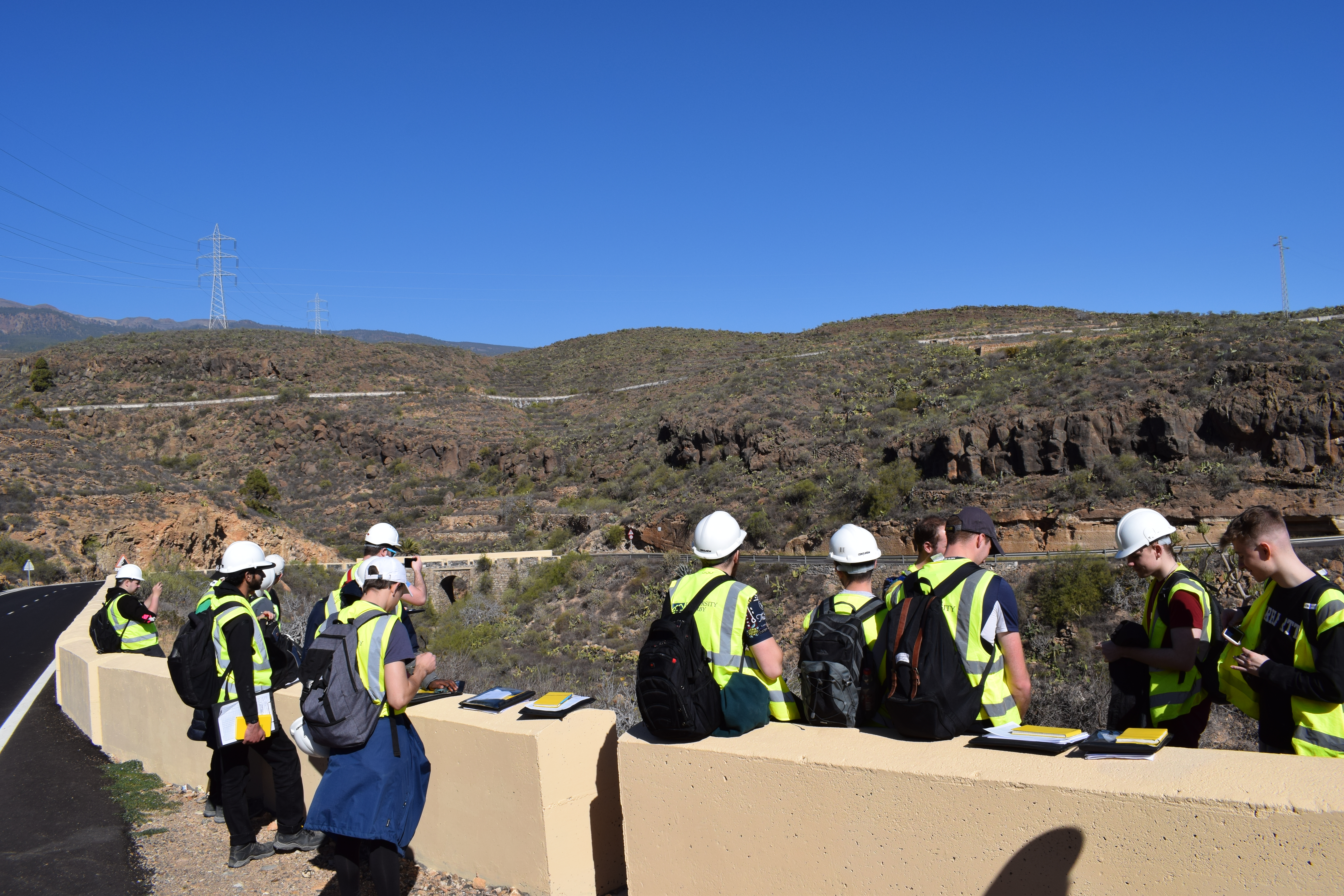
|
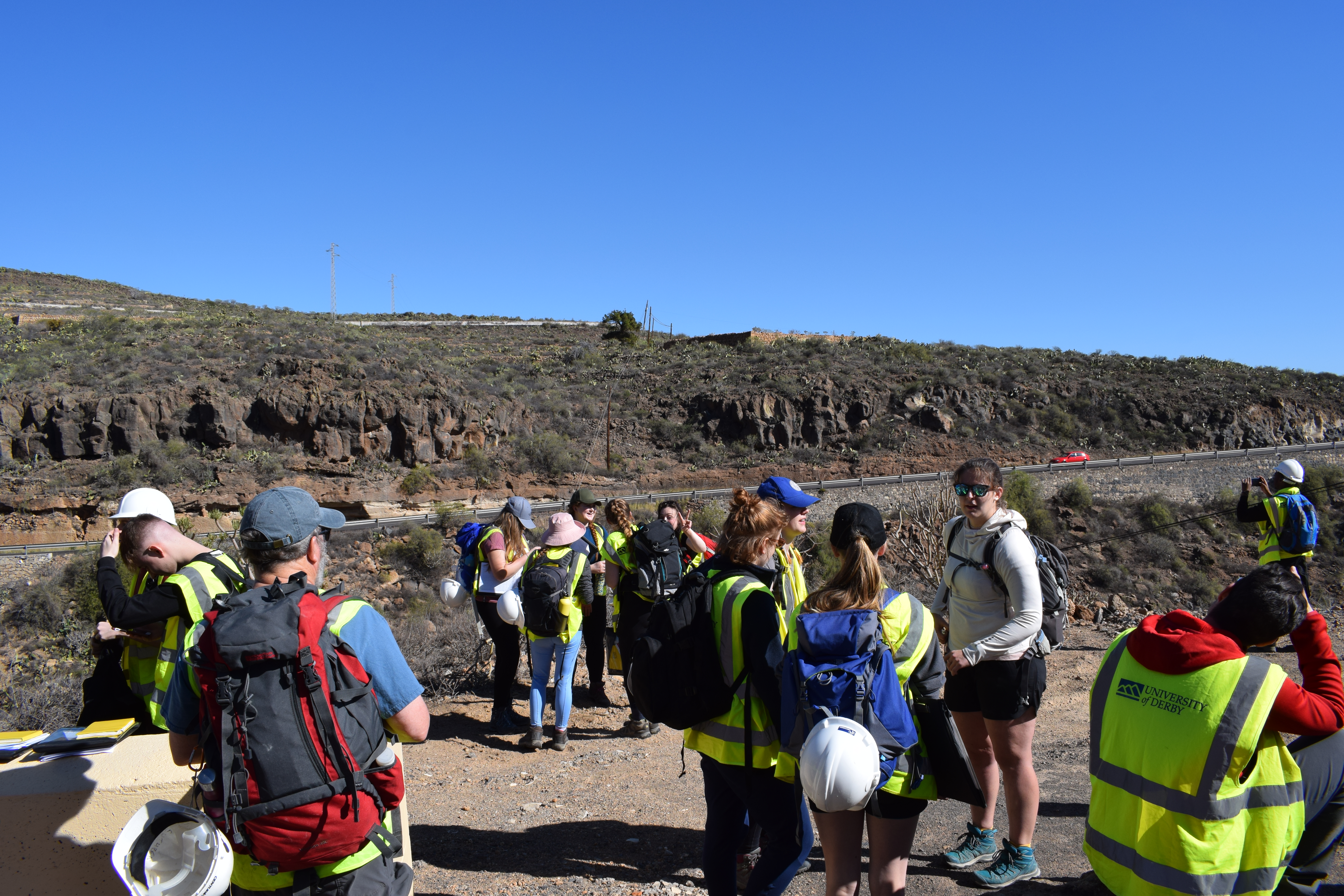 |
|
Figures 1 &
2. General views of the section, looking east from the west side of the
Barranco del Azúcar, with the 2019 University of Derby group. The
linear concrete structure high on the hillside is one of the major aqueducts
feeding groundwater from the galerias (water mines) to the crops
on the south side of the island.
|
Stratigraphy: the section
starts in the Helecho Formation - the top unit of the Lower Bandas
del Sur Group - and continues up into the lower part of the Upper Bandas
del Sur Group. The rocks are all Pleistocene in age, ranging from around 0.773
Ma to around 0.596 Ma.
Tasks: at this location, we
will produce a graphic log of the section, and interpret each of the units to
try to reconstruct the volcanic history of this part of the Las Cañadas
stratovolcanoes. The rocks are gently dipping and the road ascends gradually
through the section, so rather than measuring a vertical section straight up
the cliff, we will take the easier and safer option of following contacts and
units along the road to piece together our log. Aim to fit your log on a single
sheet of log paper. It will be easiest to draw the log by hand.
The photos are your outcrops,
and you'll need to spend time studying them in detail, and working out the
relationships between them. Where you need additional information, because you
can't actually get your hands or your hand lens on the rocks, this is given
below.
Logging
instructions. Log paper (pdf;
PowerPoint; odp)
Photos are by Roger Suthren
and Adrian Watson

General view of the section

Figure 3. Panorama of the whole road section, looking east from the west
side of the barranco. From the left, the section starts at sub-location
2.4.1 just to the right of the van, and continues across the bridge and
up the road section to where the road disappears over the skyline on the
right beyond sub-location 2.4.7. Click on the image to see it at full size. |

Logging the section
- The first decision you need to
make is how to divide the section up into units.
- On the panorama below, we have
marked some obvious contacts, and subdivided the section into intervals (A,
B etc.).
- You may decide that the intervals
can be subdivided into two or more units.
- You can estimate thicknesses,
clast sizes etc. using the scales provided.
For each unit, record:
- the nature of its basal contact
and relationship to the underlying unit; look particularly for evidence of
time gaps;
- its thickness, and any lateral
variation in thickness and overall geometry;
- distinctive features such as colour
or the way it weathers or forms landscape features;
- its lithology, in detail, using
the appropriate hand specimen description scheme for either crystalline or
fragmental rocks;
- any changes in lithology (e.g.
is there a concentration of clasts or vesicles in any particular part of the
unit?); record changes both vertically through the unit, and when you trace
the unit laterally;
- internal structures such as bedding
or flow banding;
- from your observations and your
previous experience, you should be able to attempt interpretations of the
processes and conditions involved in the formation of each unit in the section,
and include those interpretations on your log. You should then attempt an
overall interpretation of what the section represents.
 |
|
Figure 4. Click on the panorama
to enlarge it.
Click here for the full size, unlabelled image. In this panorama:
- contacts have been marked
as dashed lines - their position is approximate;
- intervals between contacts
are assigned letters (A to F);
- sub-localities are numbered
(loc 2.4.1 etc.). This should enable you to match up individual outcrop
photos to the overall section shown on this panorama.
|
| General view
of the section at loc 2.4.1 |
Close-ups of
the outcrops of interval A |
|
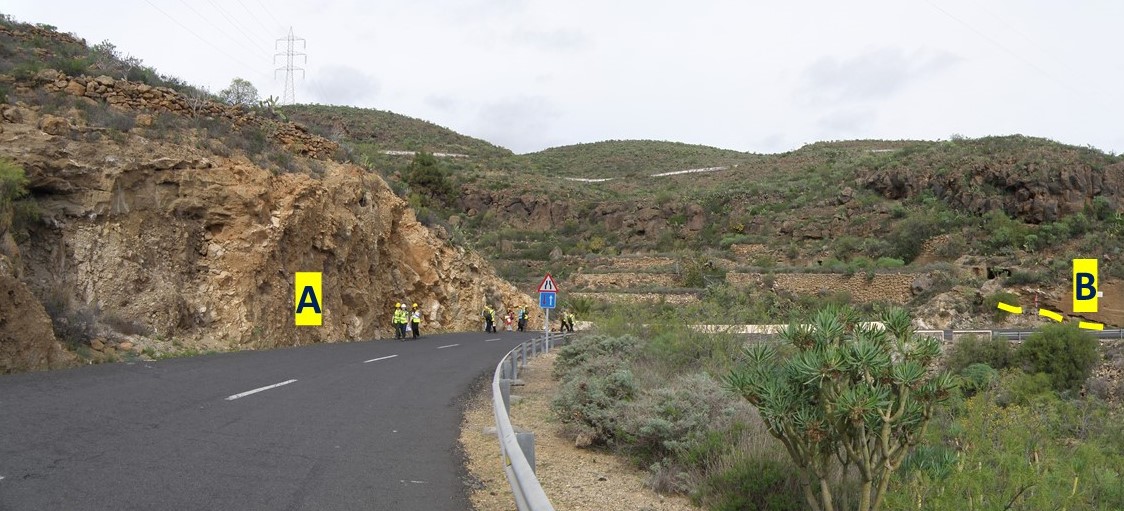
Figure 5.
View of the lowest unit in
the section, west of the bridge. These are breccias of the Helecho Formation
(interval A), and their base is not exposed here - record this as base
not seen on your log.
On the right, the dashed line
through the section east of the bridge marks the inclined base of interval
B, which overlies the Helecho Formation.
Streetview
|
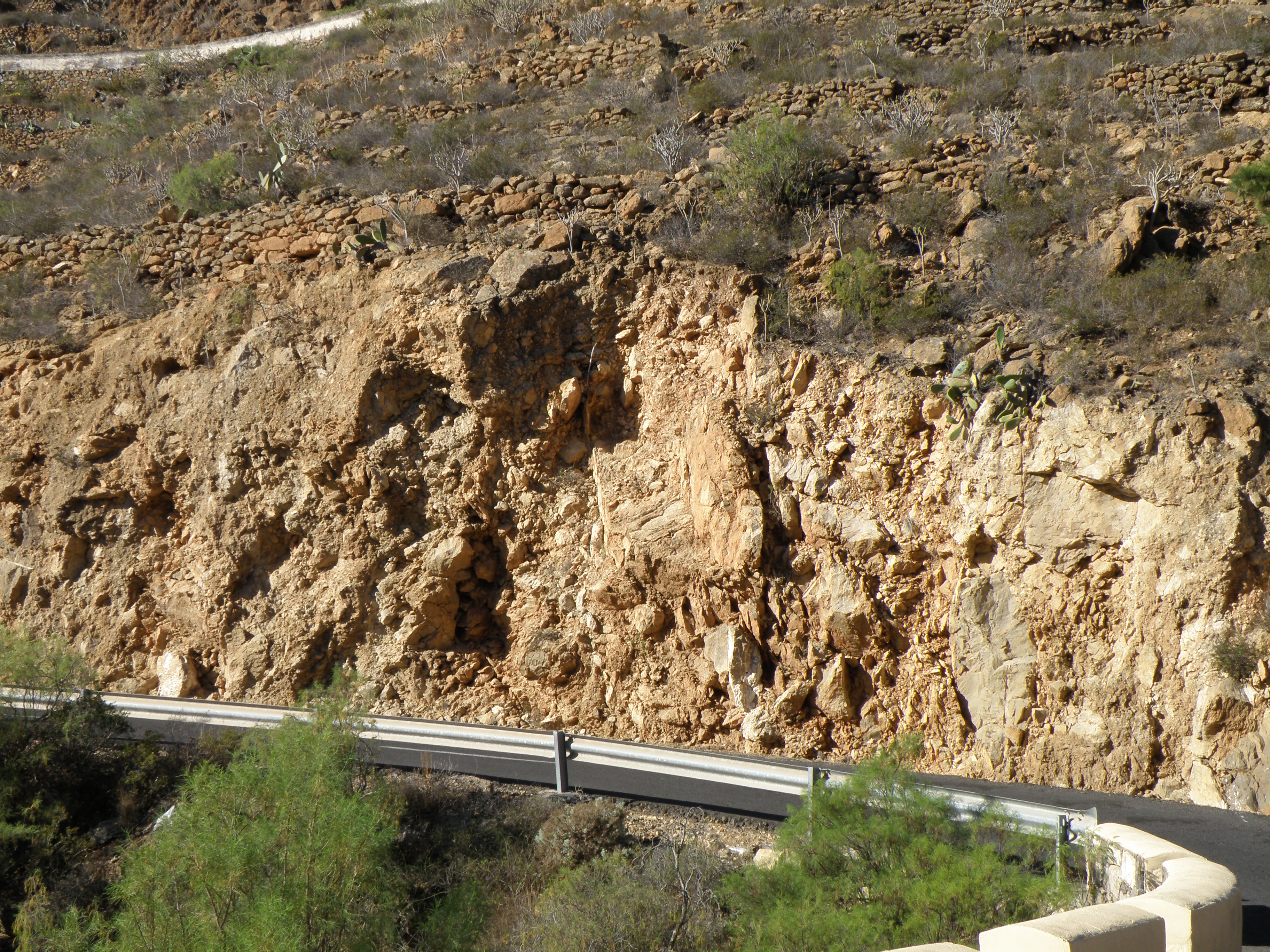
Figure 6. Outcrop is approximately 6m high.
This deposit is very widespread
on southern Tenerife. It has been described and interpreted by Davila
Harris et al. (2011) This short article is well worth reading.
|
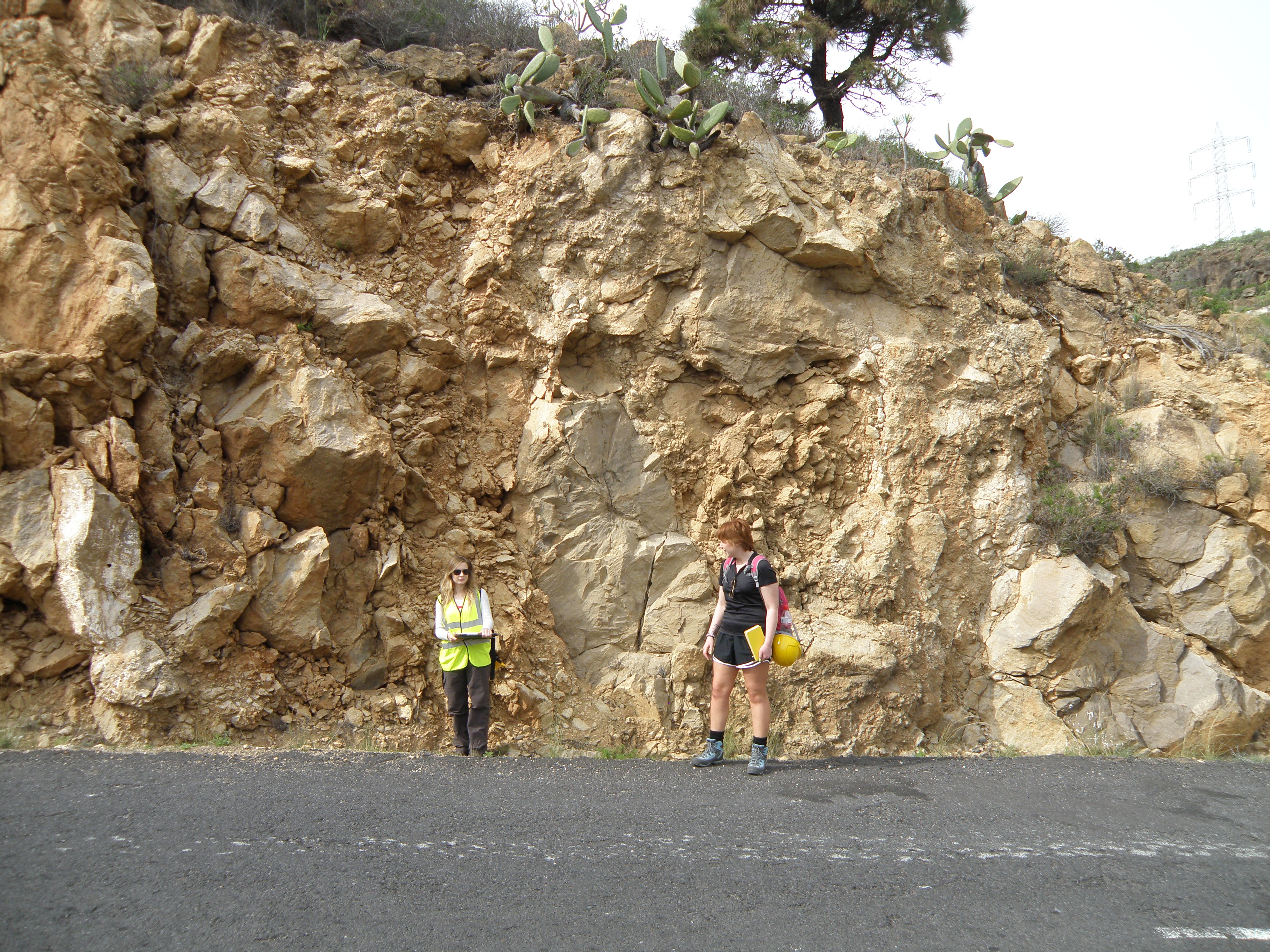
Figure 7. Detail of the right-hand part of Figure 6. Note: the fracture
pattern in the large block between the two geologists is a result of blasting
during road works.
- This is a very coarse fragmental
deposit: describe it as you would any other clastic rock, following
the description scheme.
- Grain size, sorting, shape
and support are important.
- Are the clasts all of similar
composition, or is there a range of compositions?
|
| General view
of the section at loc 2.4.2 |
Close-ups of
the outcrops |
|
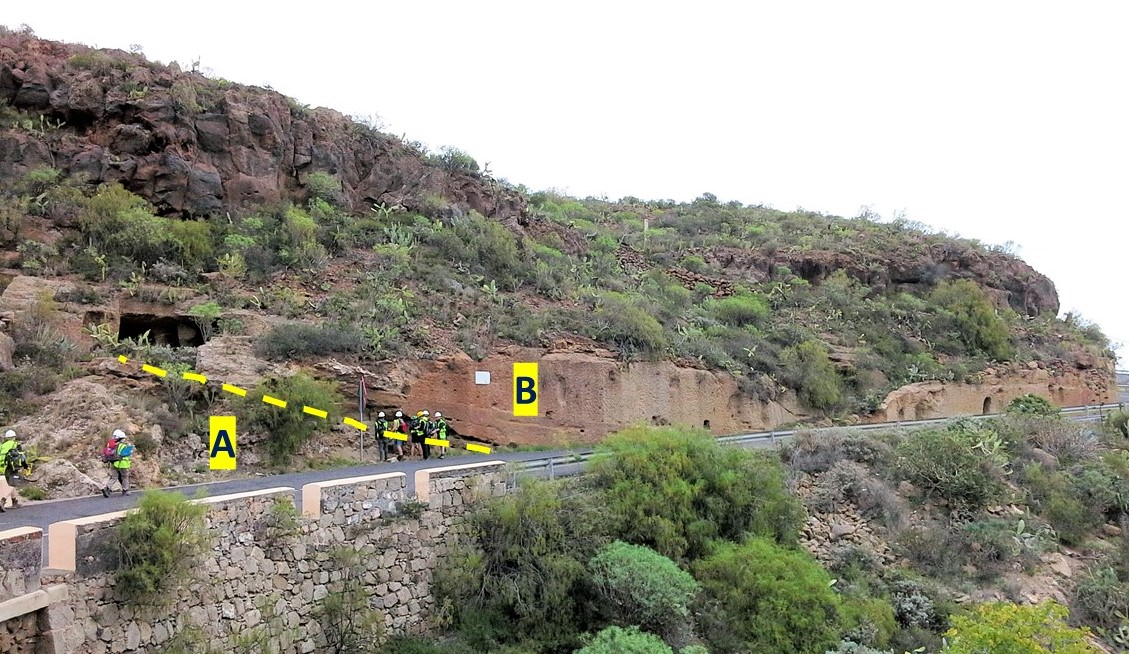
Figure 8. Click on the picture to enlarge it or here
for the full-size image.
View of the contact between
intervals A and B.
- Can you see any change in
the attitude of the bedding in interval B?
- Explain your answer.
Streetview
|
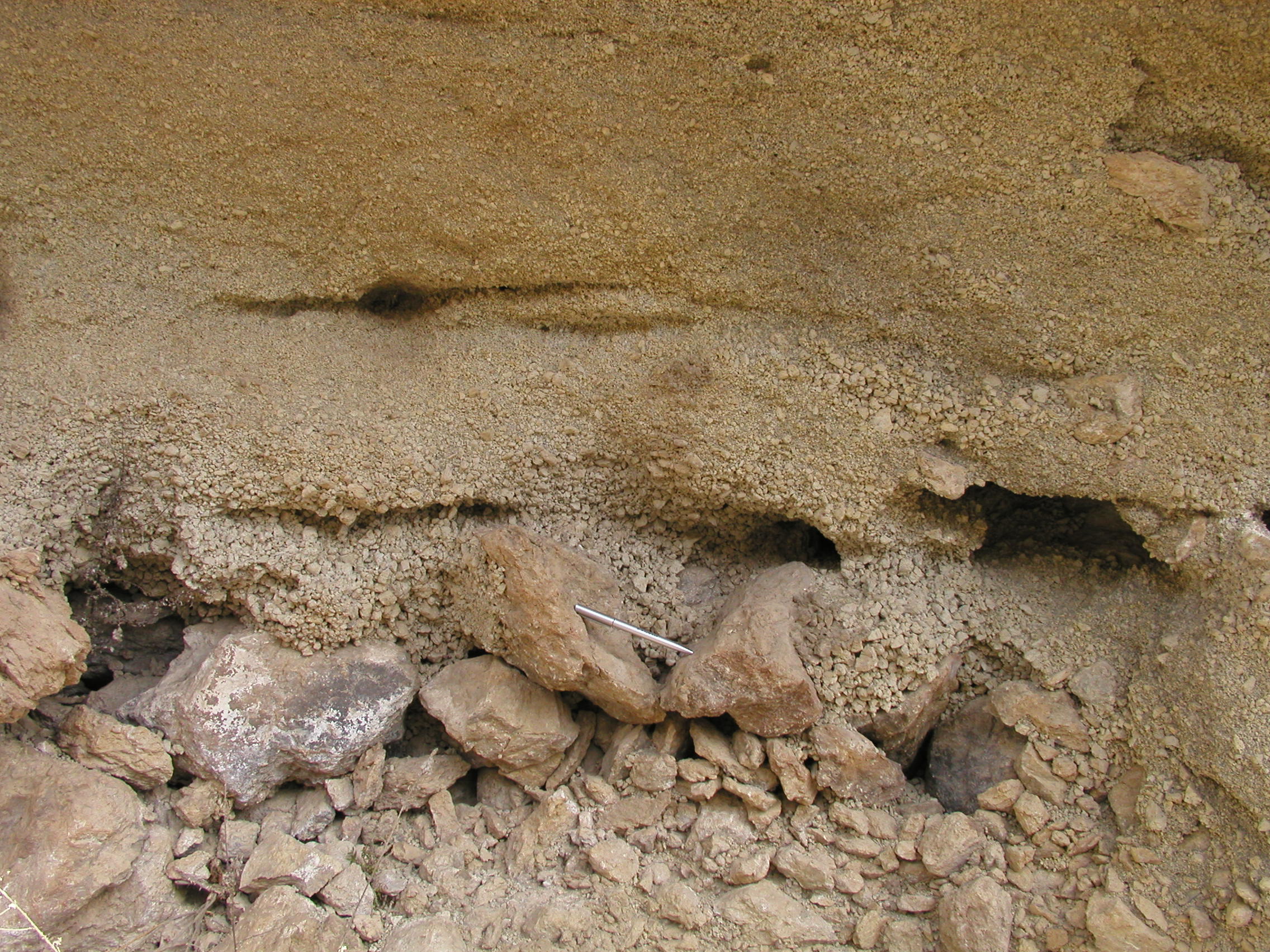
Figure 9. Pen is 15 cm long, and rests on the A\B contact.
- Describe the contact and
the units above and below it in detail
|
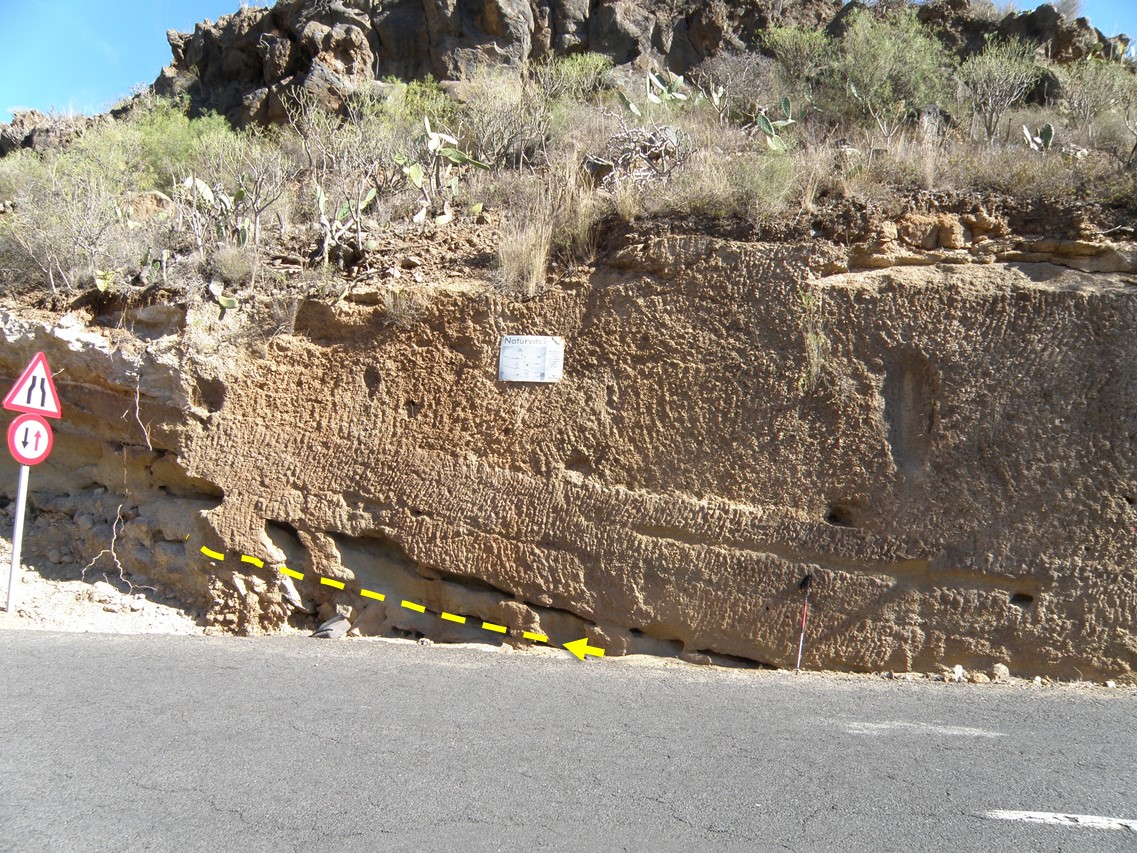
Figure 10. 1 metre pole for scale. The A\B contact
is arrowed.
- From the information in
this and later photos, would you subdivide interval B into 2 or more
units?
|
| |
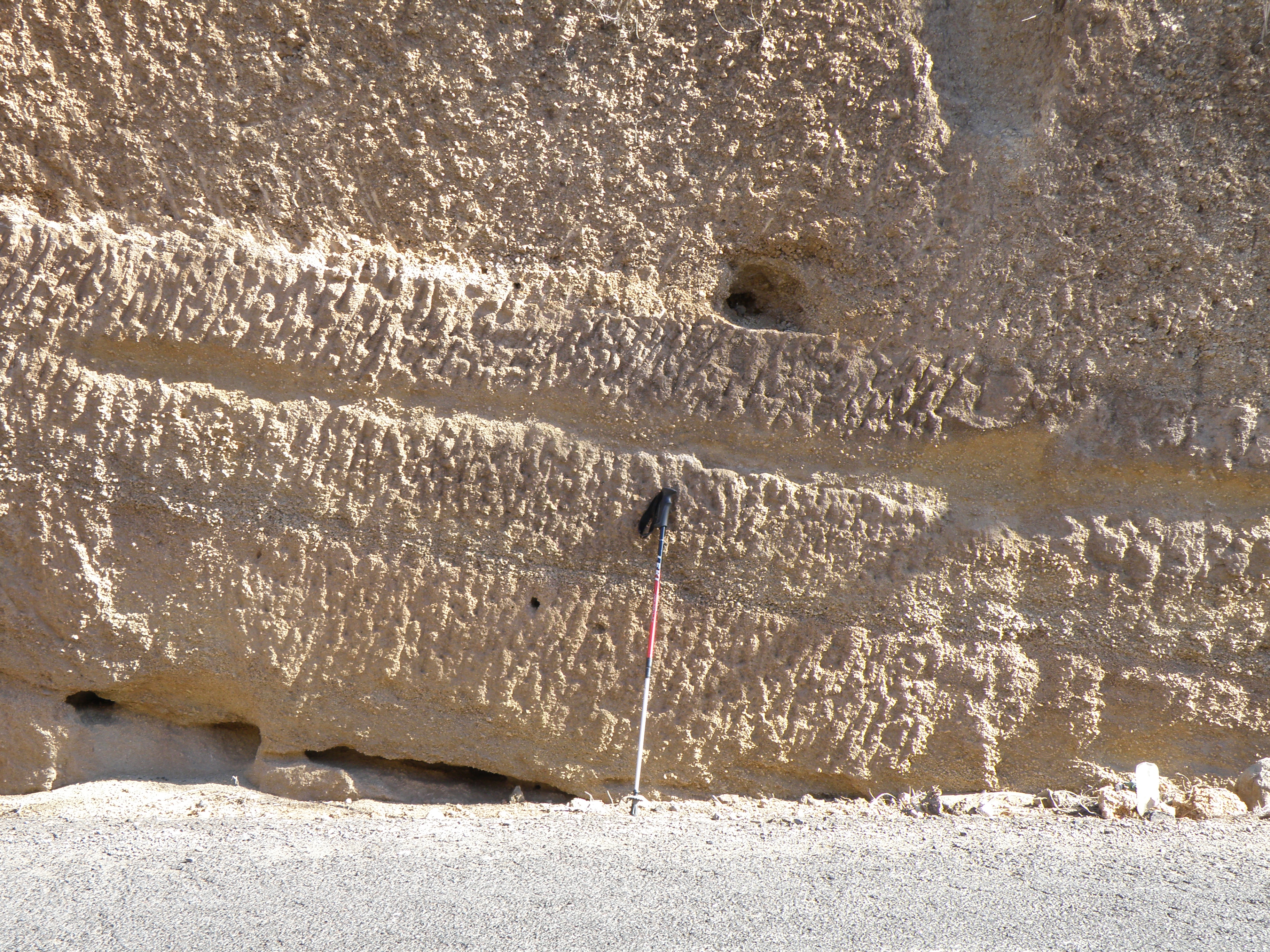
Figure 11. 1 metre pole for scale. Close-up of Figure 10. The sub-vertical
lines are artificial: they were made by an excavator.
|
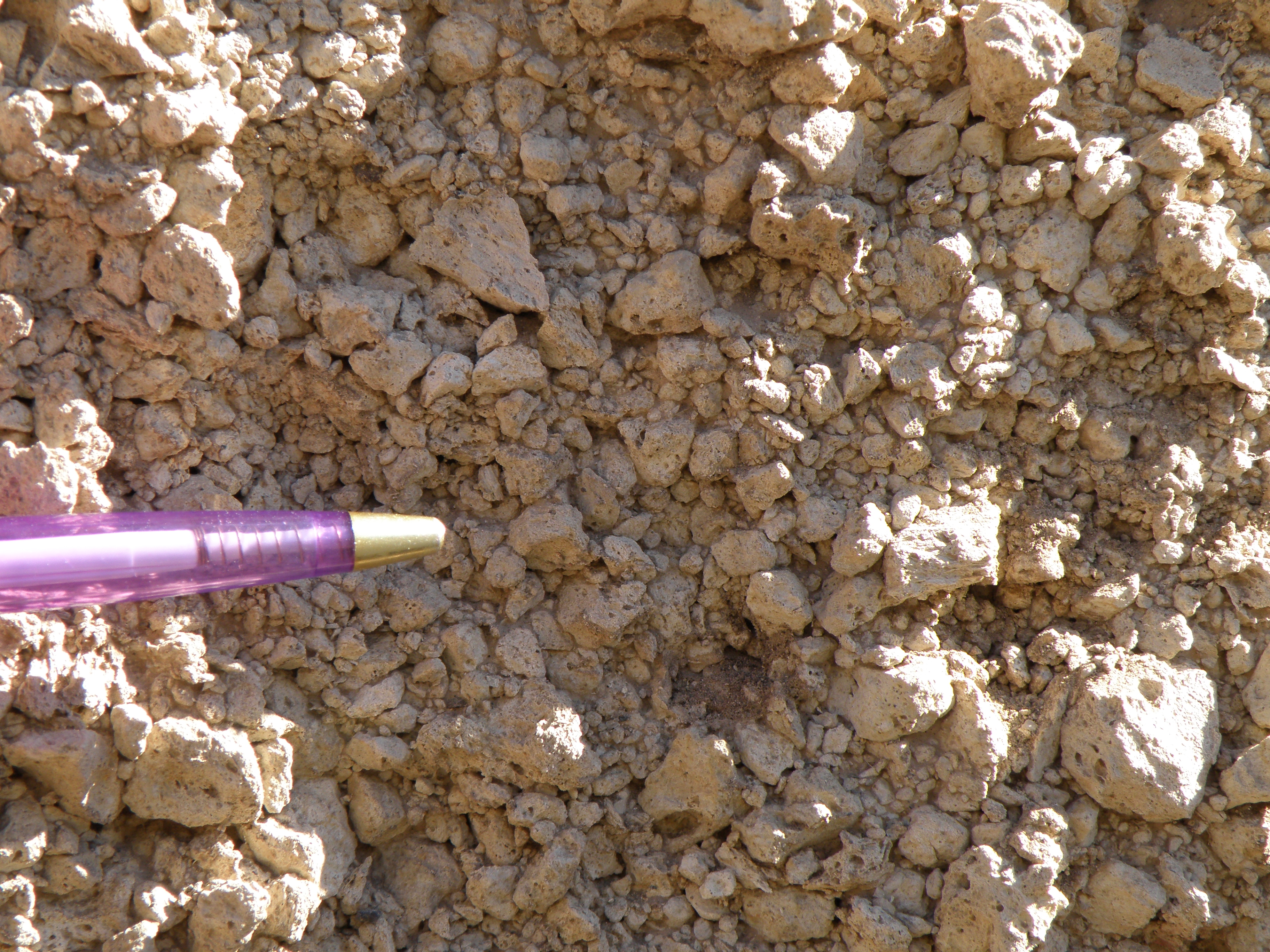
Figure 12. Detail of the top unit in Figure 11. Metal tip of pen is 10
mm long.
Your detailed description should
enable you to interpret how this material was emplaced.
|
| General view
of the section at loc 2.4.3 |
Close-ups of
the outcrops |
|
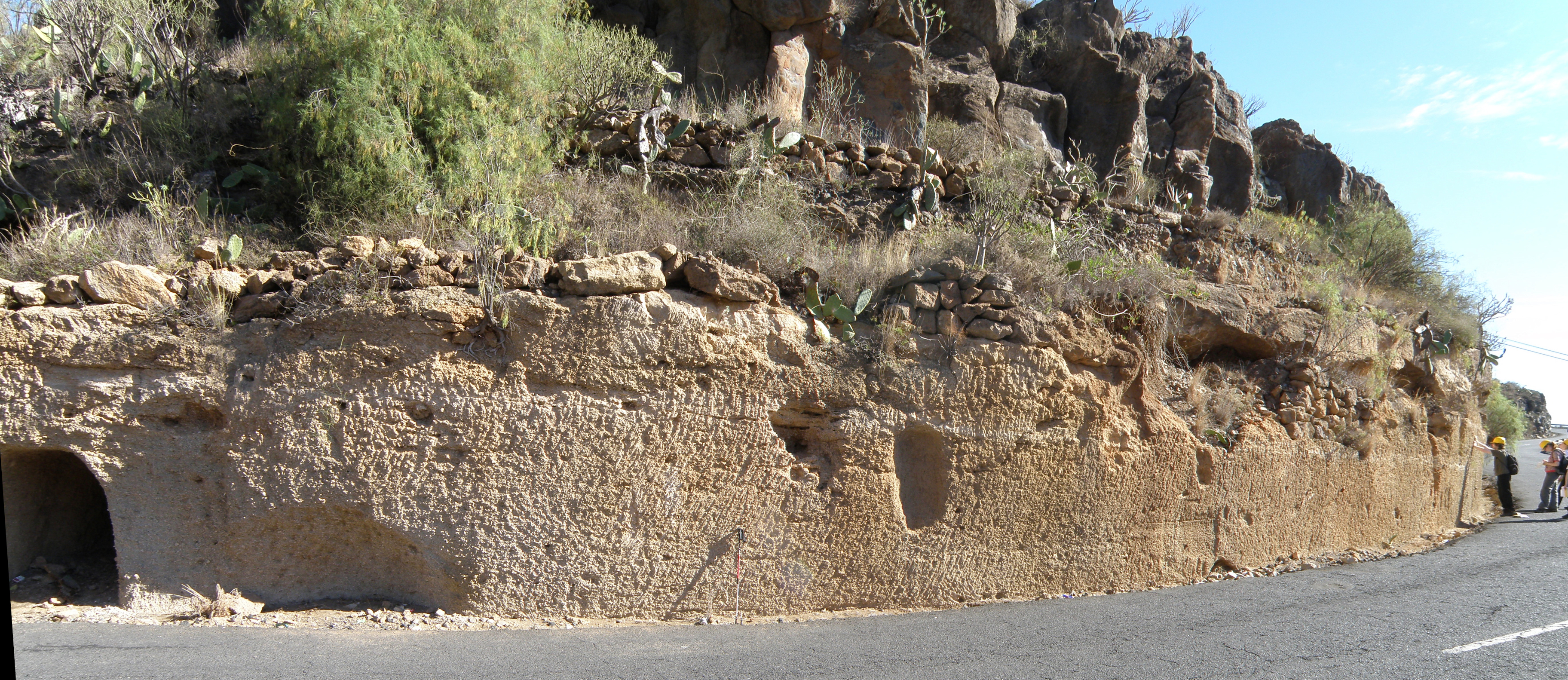
Figure 13. 1 metre pole for scale (centre).
View of intervals B, above
the road, and F, at the top of the outcrop; the intervals between are
hidden by the wall and vegetation (including Opuntia - prickly
pear cactus).
Streetview
|
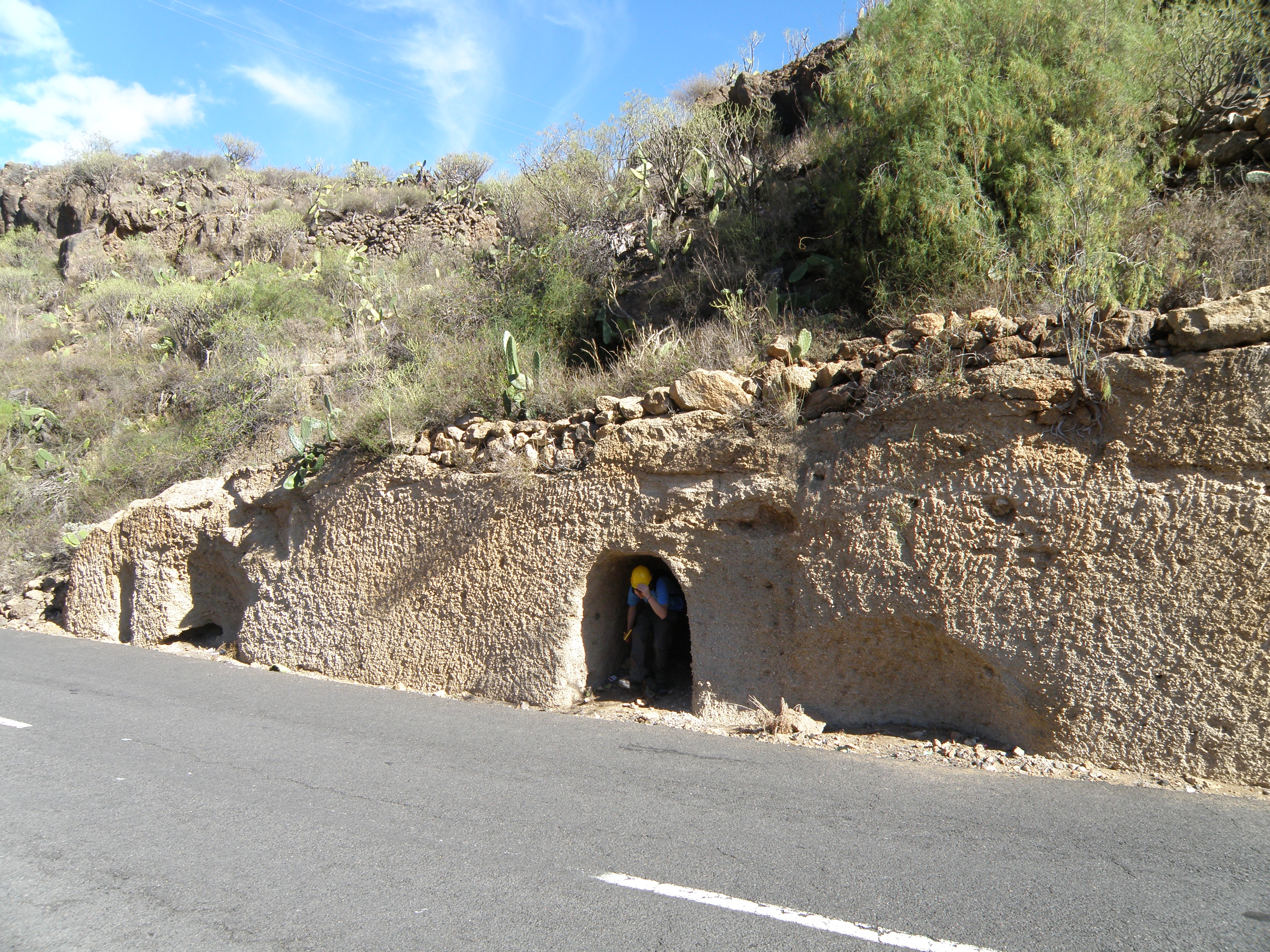
Figure 14.
Another view of interval B.
This lithology is commonly carved out to make storage spaces, though the
purpose of this one is unknown.
|
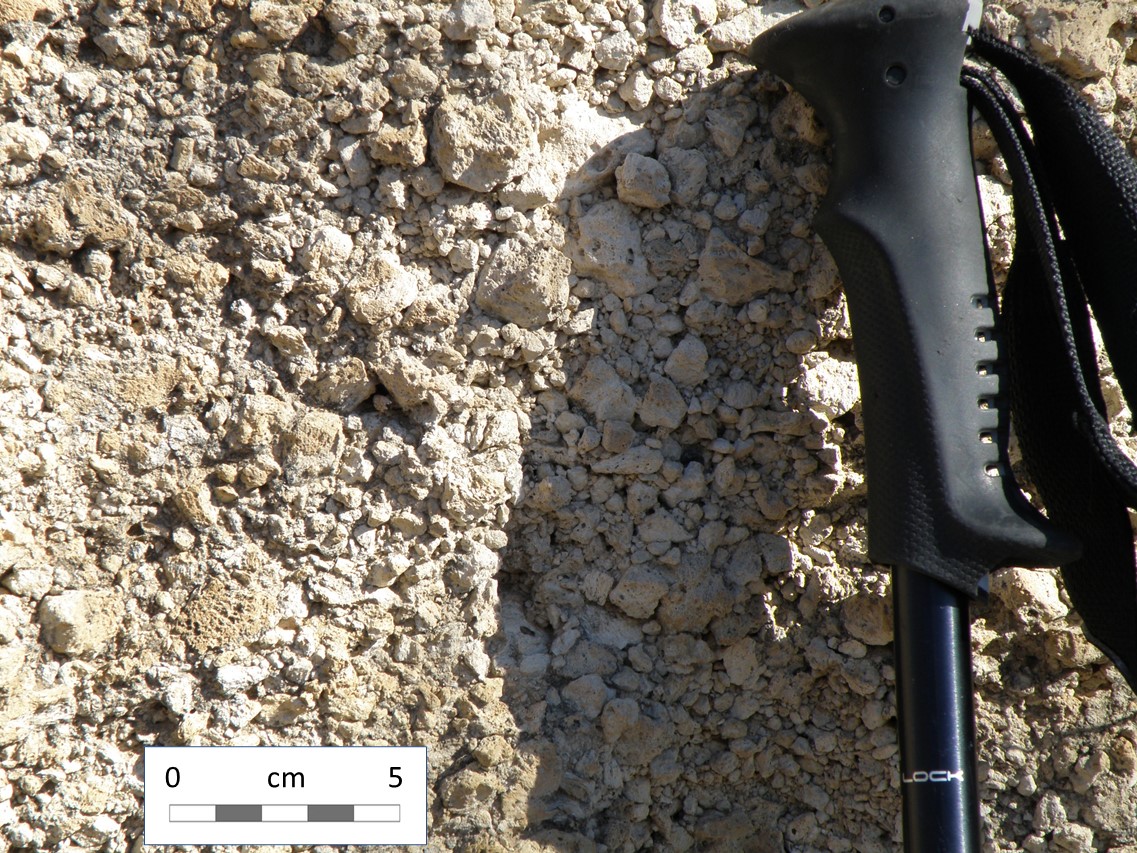
Figure 15. Full
size image
A close-up of the outcrop in
Figure 14, ~ 1 m above the road.
|
| General view
of the section between locs 2.4.4 and 2.4.5 |
Close-ups of
the outcrops from loc 2.4.4
to the km 64 post |
|
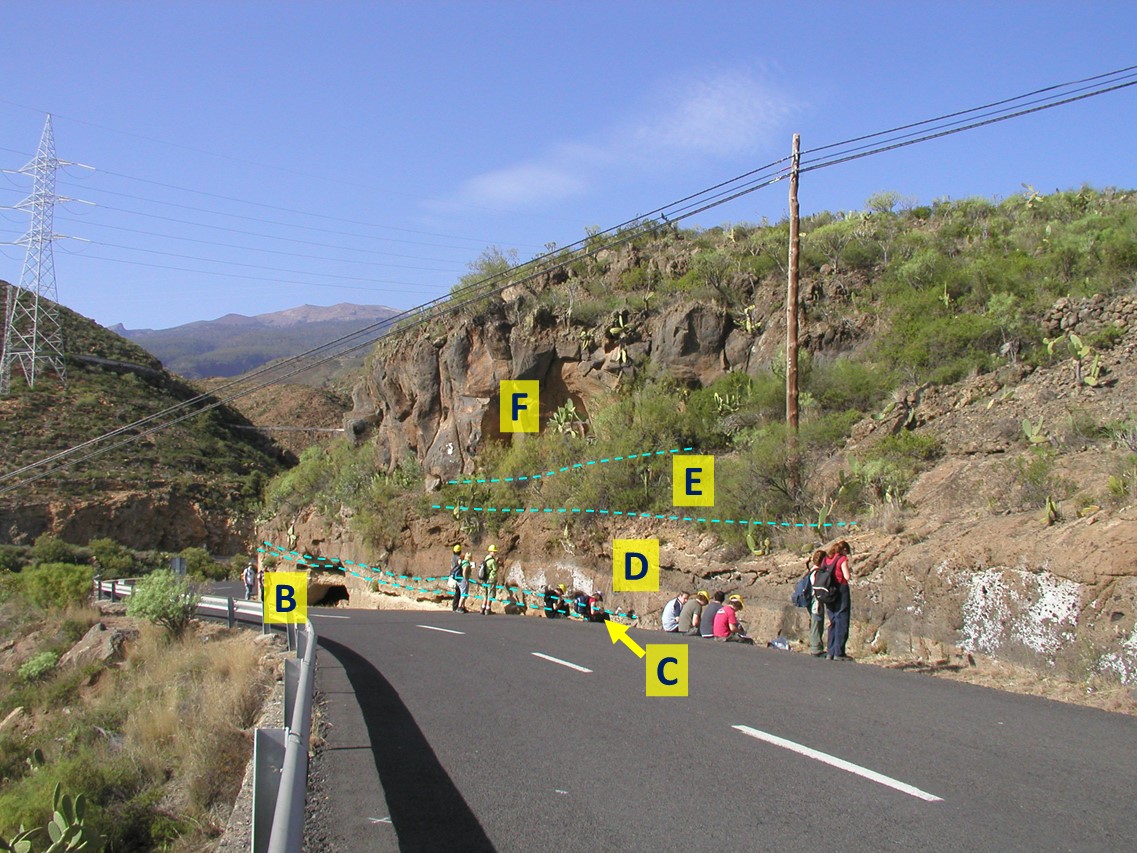
Figure 16. Click on the picture to enlarge it or here
for the full-size image.
This is a view down the section
from loc 2.4.5 to loc 2.4.4.
Streetview
|
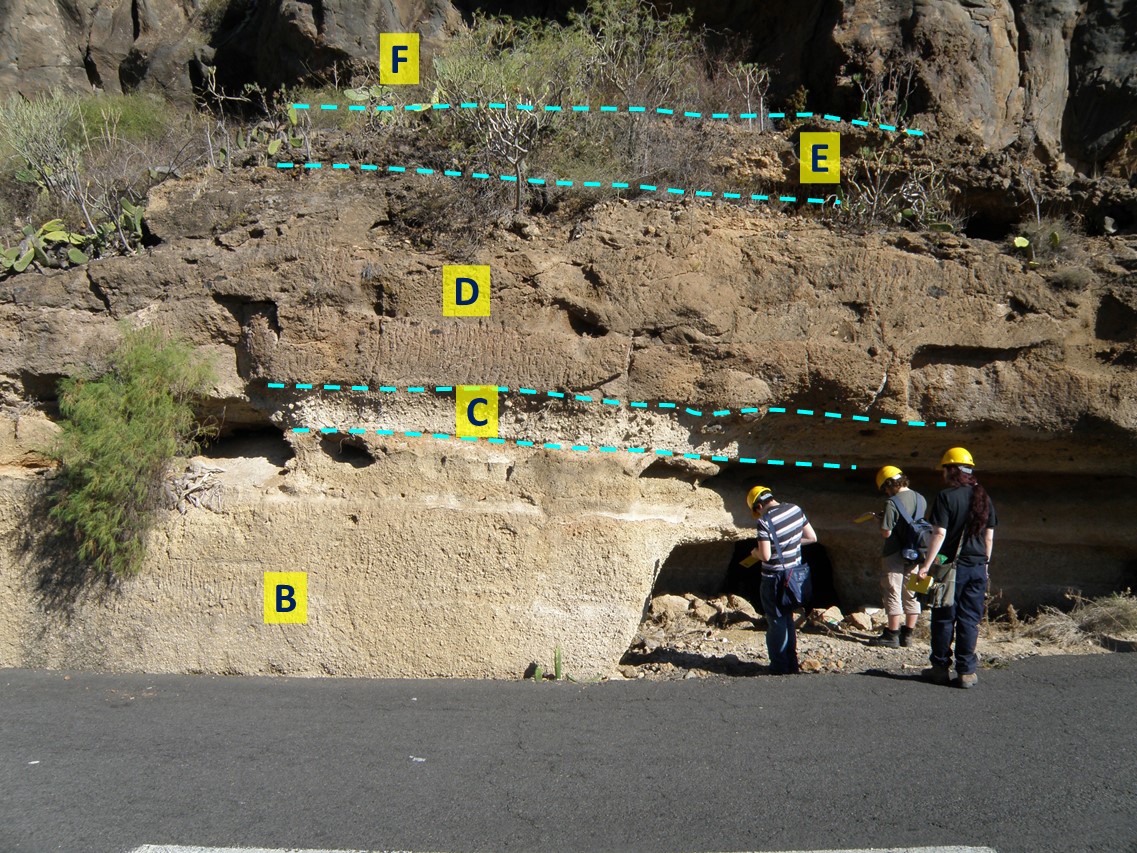
Figure 17. Full
size image.
This is the left side of the
alcove seen on the left side of Figure 16.
|
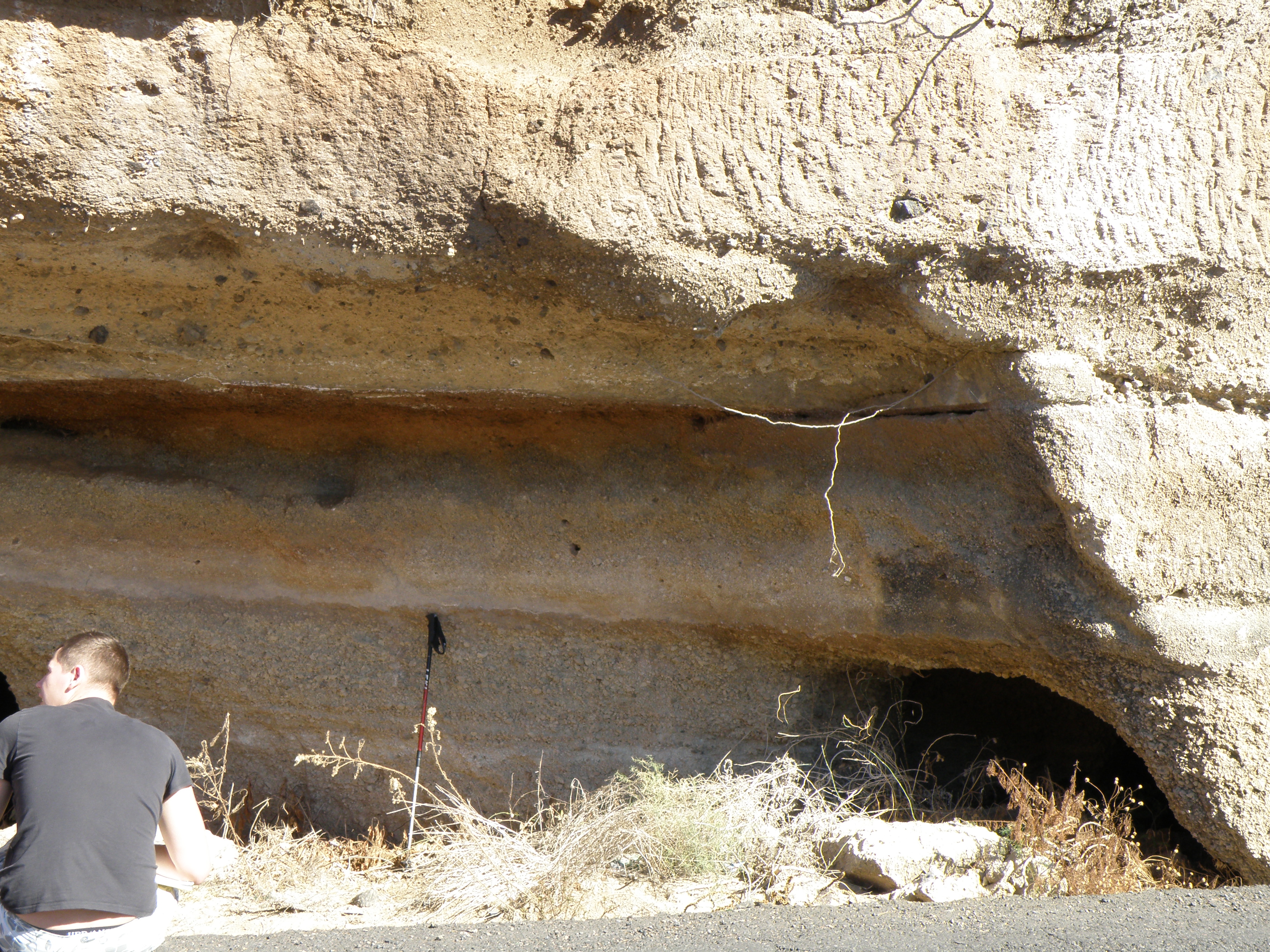
Figure 18. Pole is 1m long.
The right side of the alcove
in Figure 17. The roof of the alcove is the base of interval C.
- Study the detail of the
section beside and above the pole, looking for significant surfaces.
- Colour may be an important
clue.
|
| |
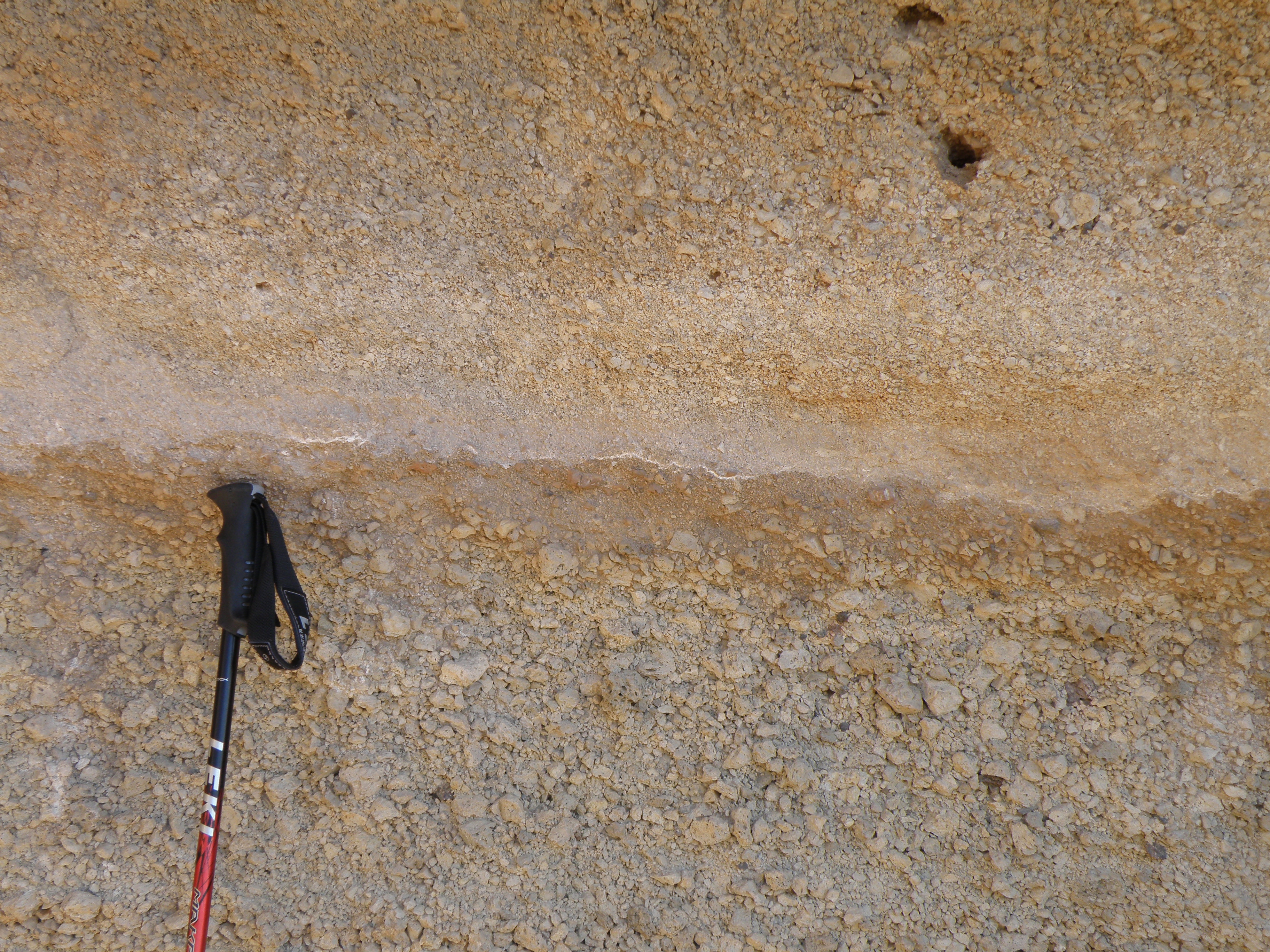
Figure 19. Visible part of pole
is 42 cm long.
Detail of Figure 18.
|
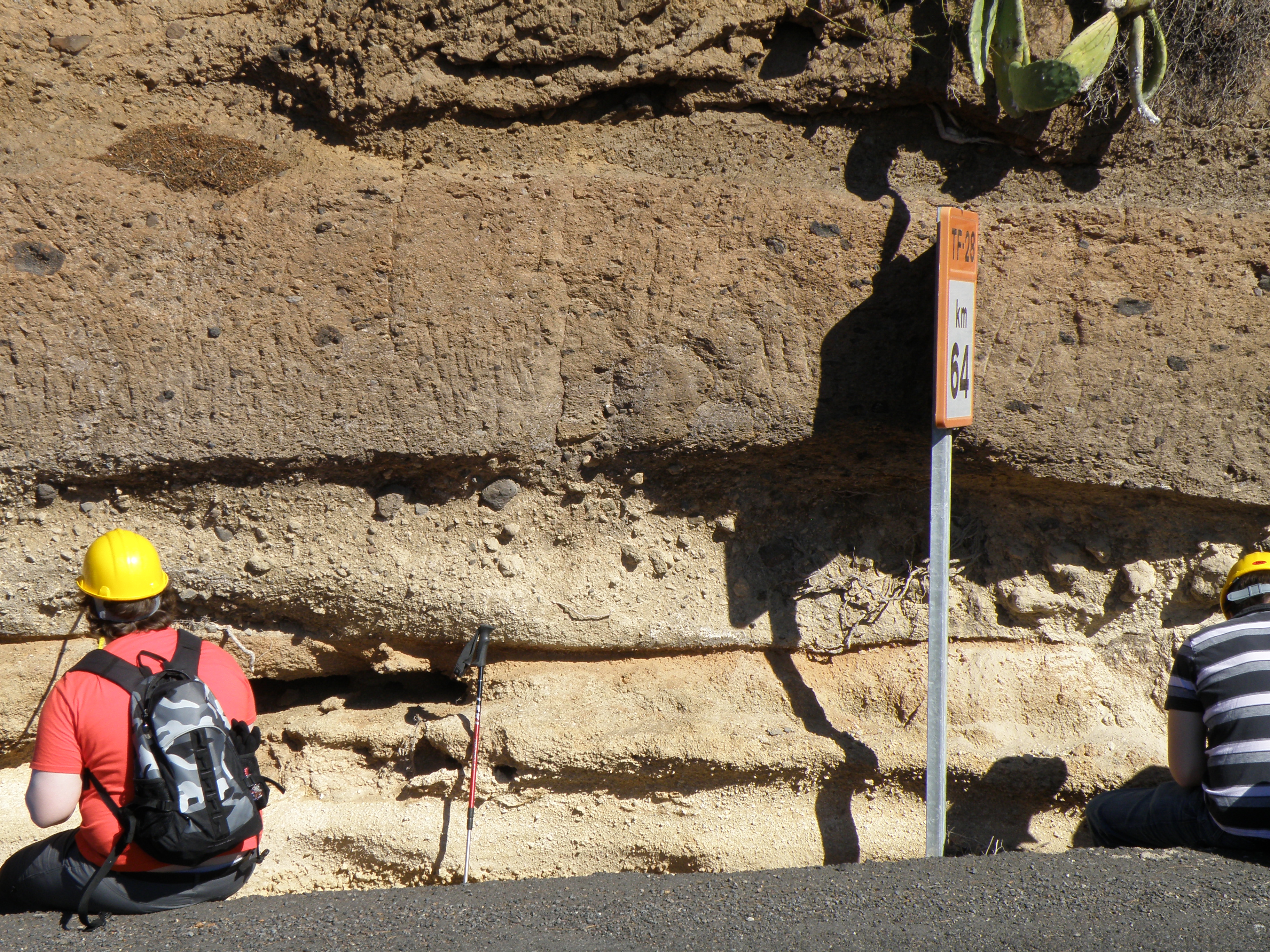
Figure 20. Pole from top of
handle to base of red section is 50 cm long.
The base of interval C is at
neck level of the two geologists. The overhanging base of D is in shadow,
just above their heads.
|
| General view
of the section at loc 2.4.5 |
Close-ups of
the outcrops |
|
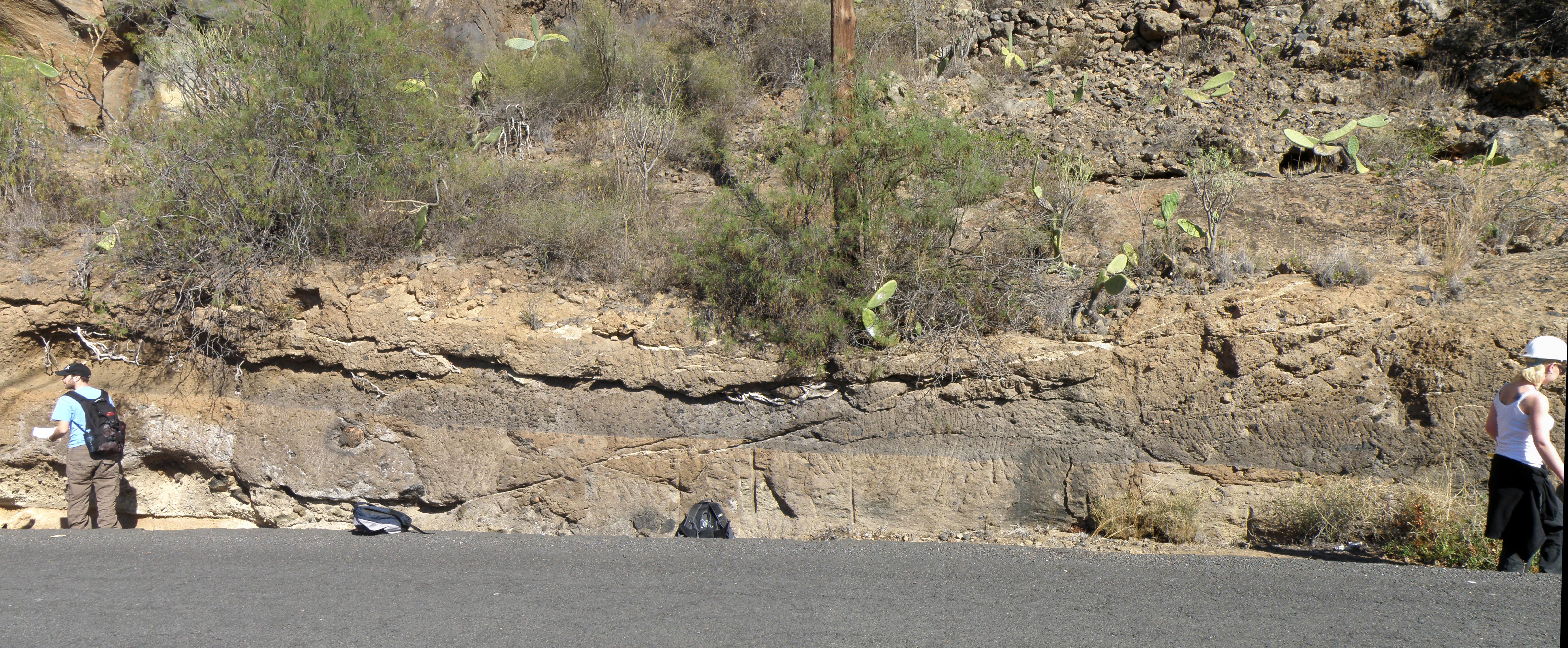
Figure 21.
Interval C is seen at the base
of the outcrop on the left. Interval D forms most of the outcrop. The
base of E is difficult to see in this view: it is roughly at the level
of the base of the electricity pole.
|
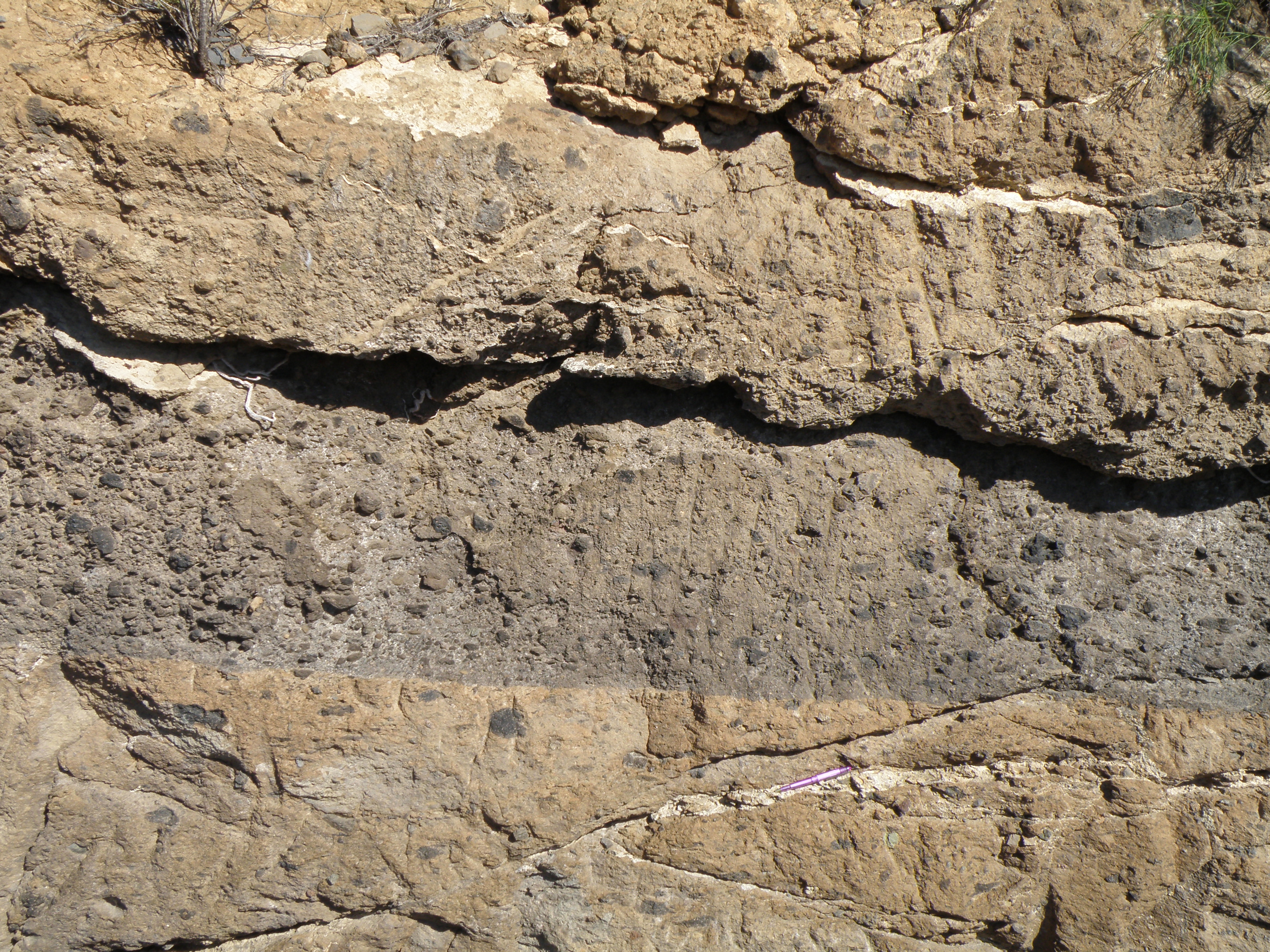
Figure 22.
Detail of Figure 21, showing
part of interval D. The white surfaces are small faults.
- Look carefully at clast
shape and size. Do they vary from bottom to top of this view?
|
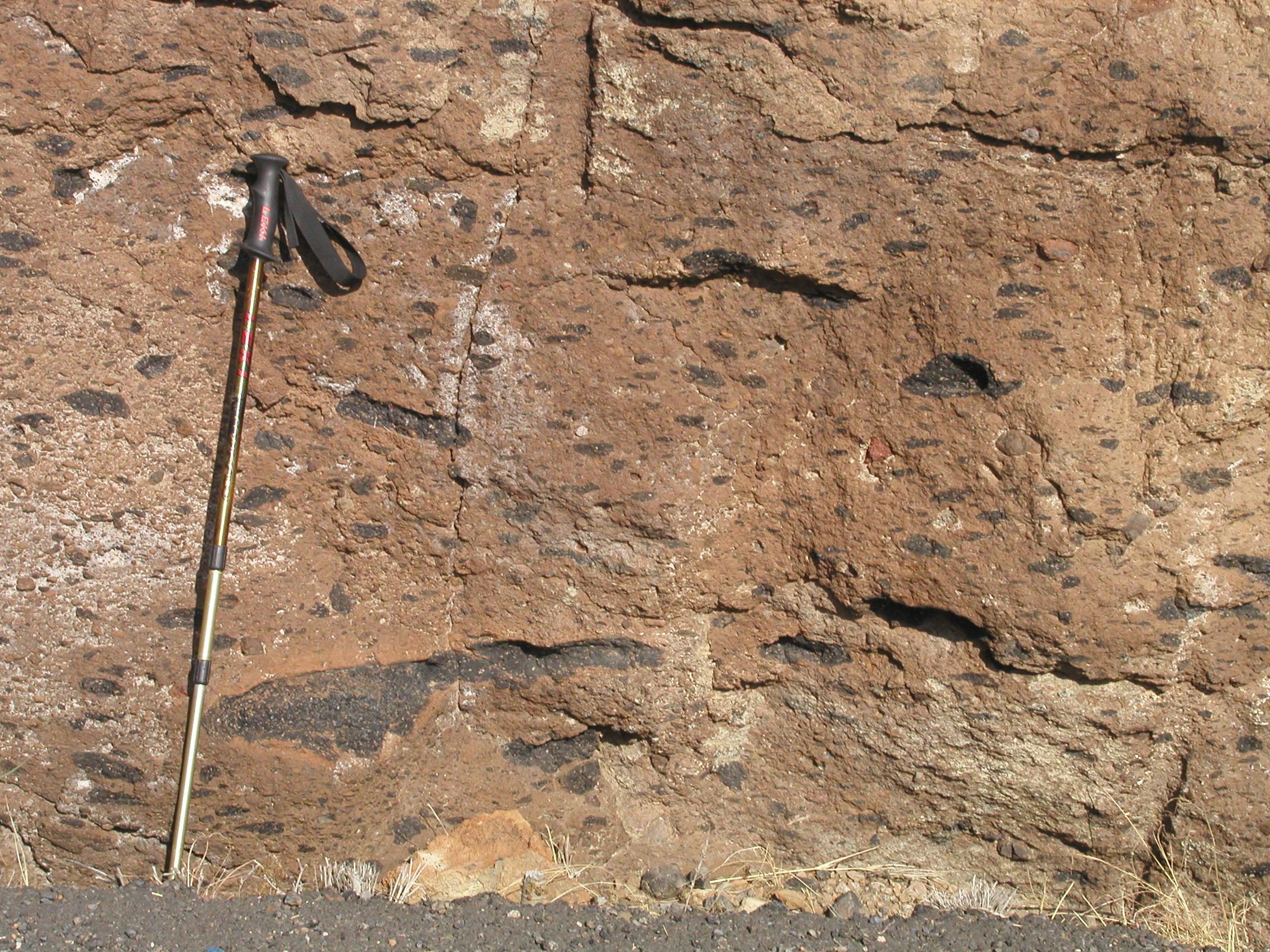
Figure 23. Pole is 1 m long. This, and Figures 24 -26 are from around
the km 64 post, between sub-localities 2.4.4. and 2.4.5.
The large dark clasts consist
of obsidian with a phonolite composition.
- Carefully describe their
shapes and sizes, and think about the significance of your observations.
|
| |
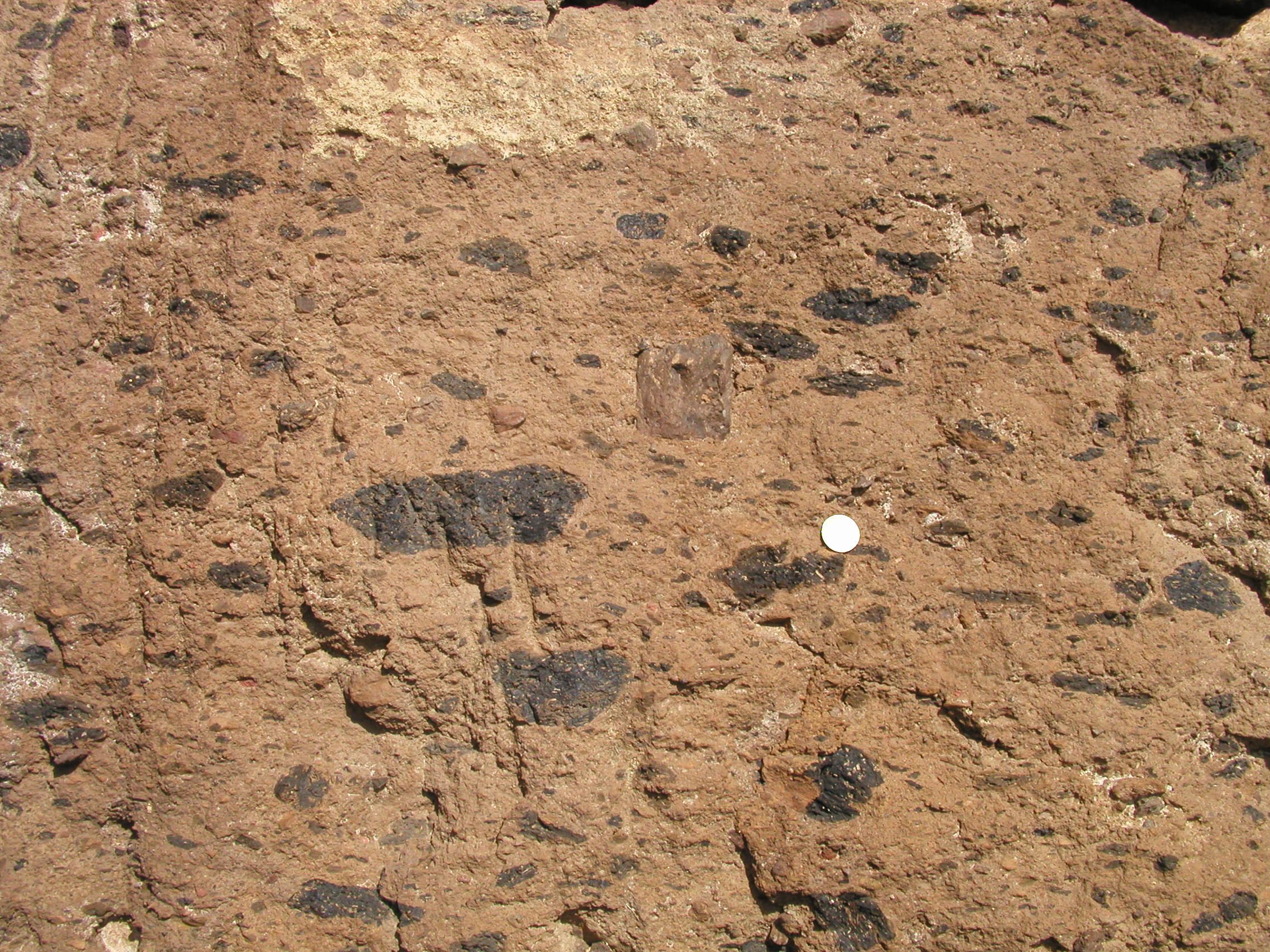
Figure 24. Coin is
20 mm in diameter.
- Besides the black glassy
clasts, can you identify any other components in this rock (look also
at Figures 25 and 26)?
- Describe its sorting and
support.
|
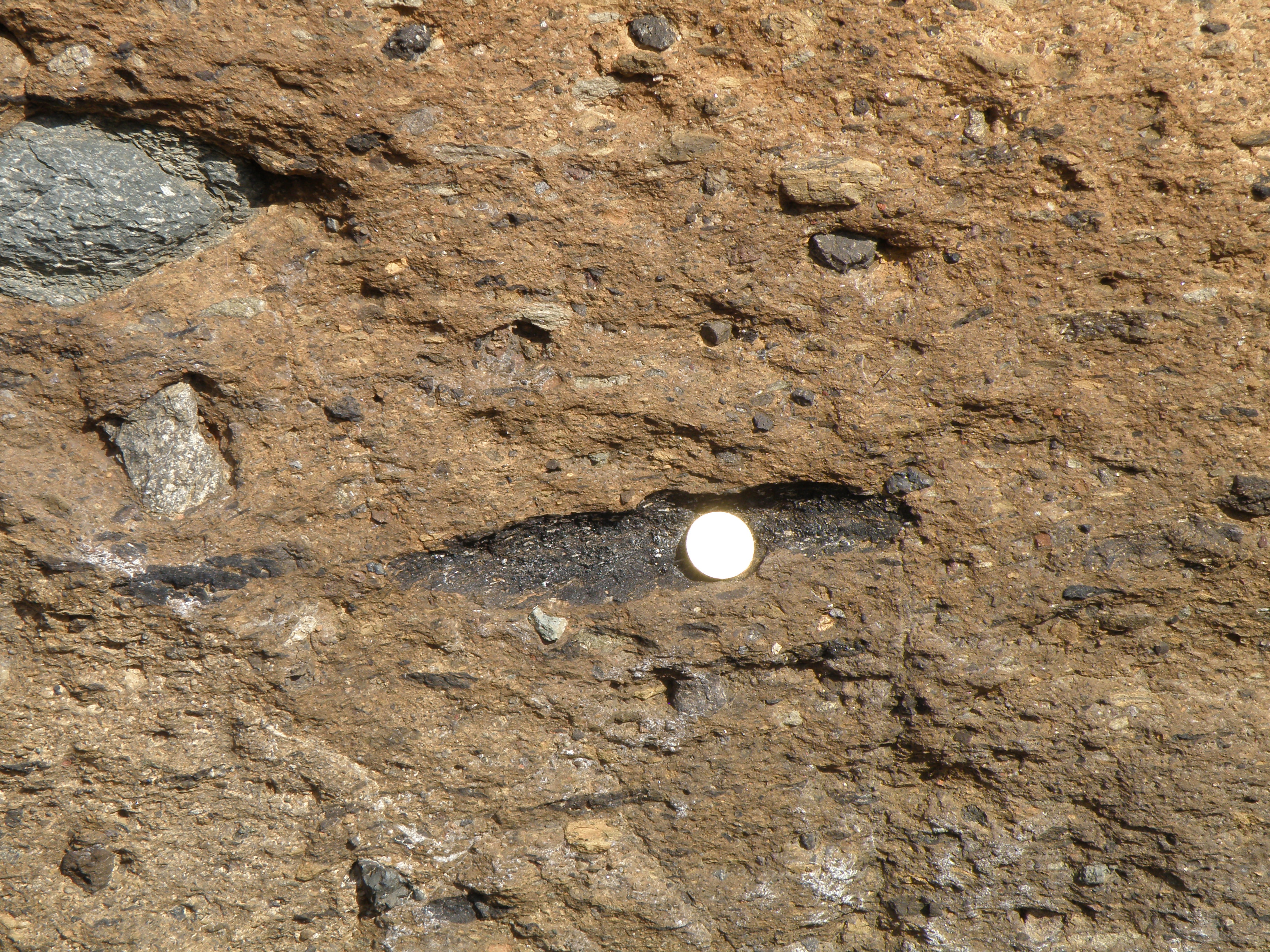
Figure 25. Coin is 20 mm in diameter.
- Zoom in and describe the
petrography of the various clasts.
|
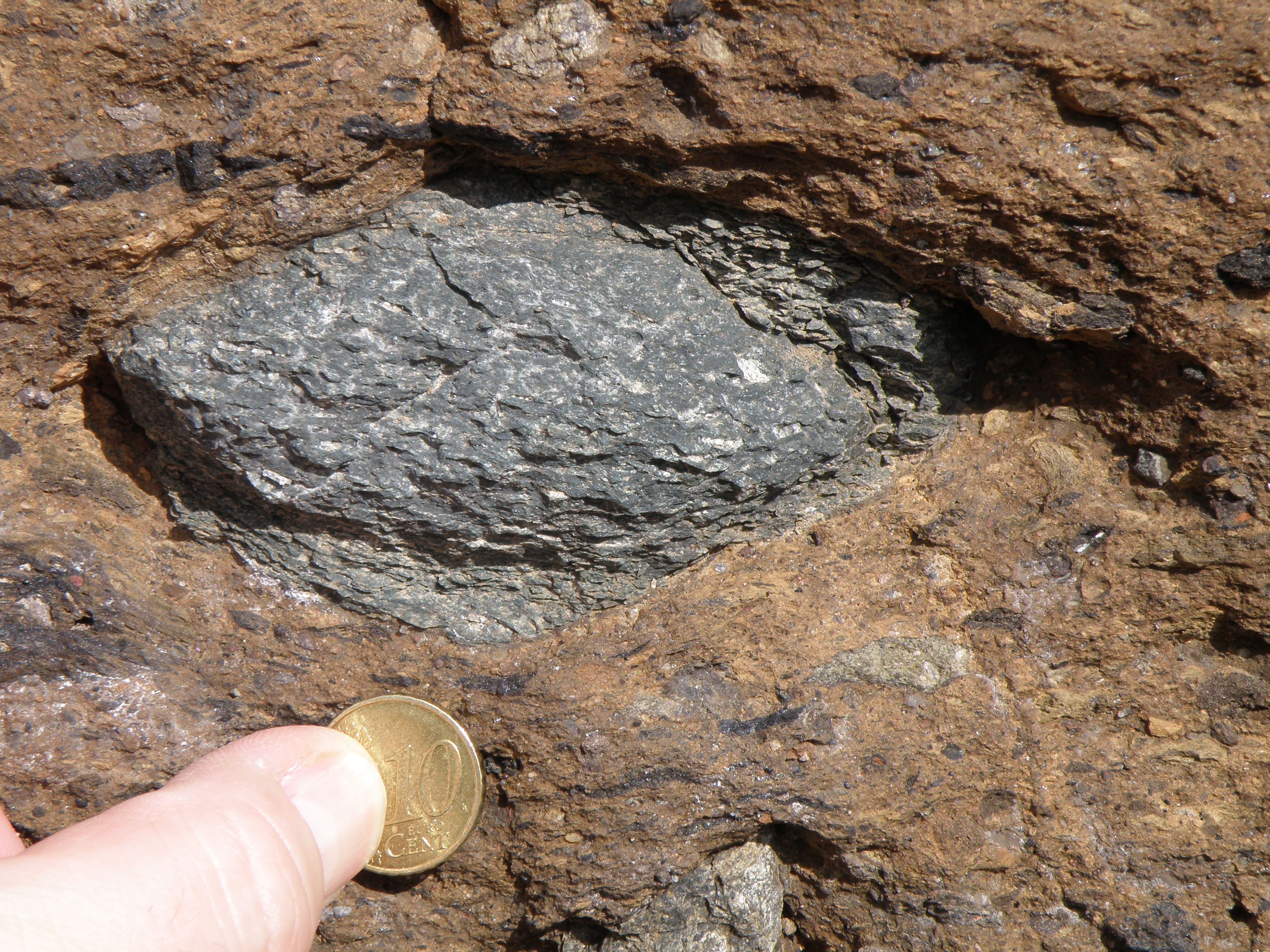
Figure 26. Coin is 20
mm in diameter.
|
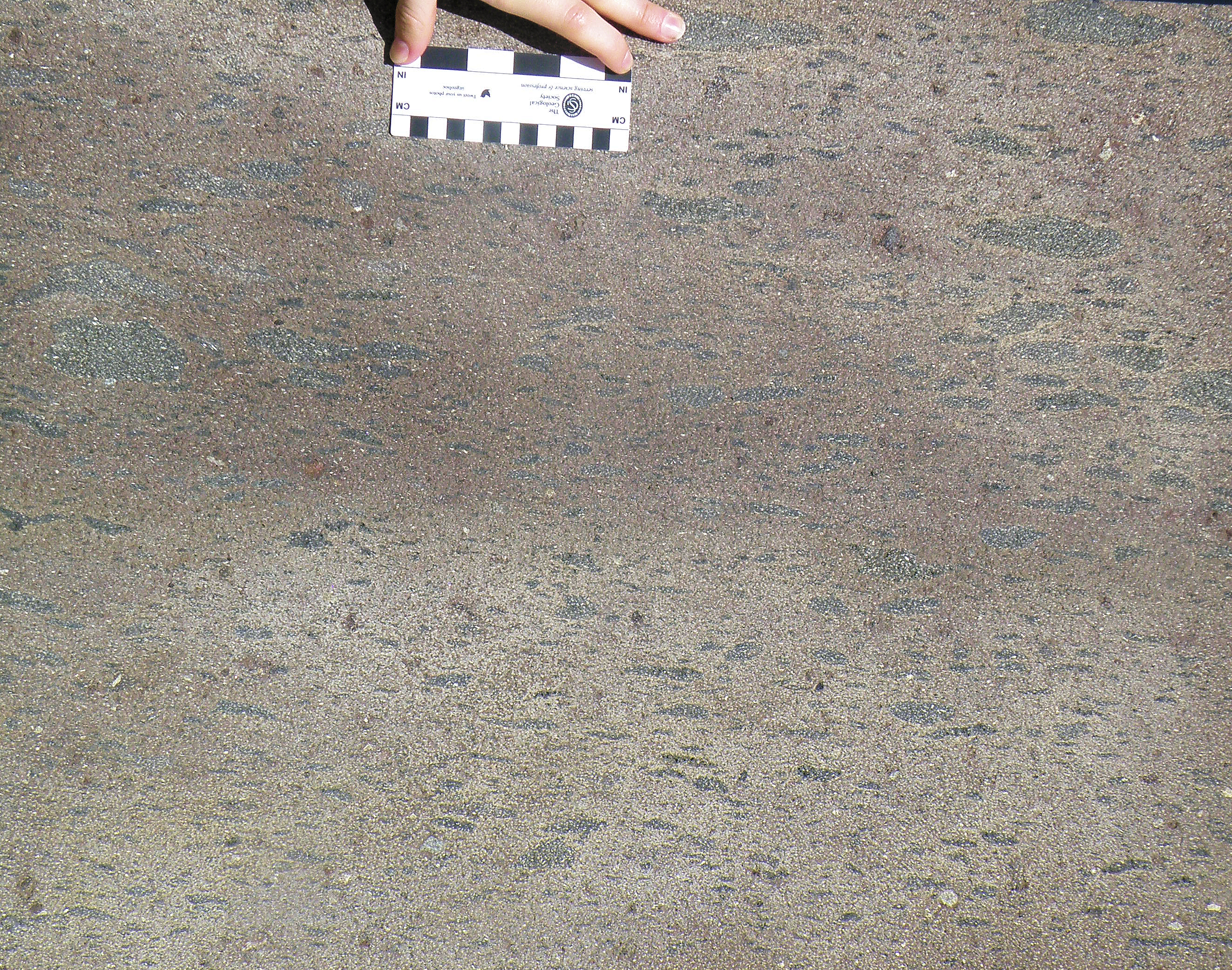
Figure 27.
The streaky rocks seen in interval
D are quarried at several locations in the Bandas del Sur, and sawn into
blocks to use as ornamental building stone all over Tenerife..
This block has been sawn perpendicular
to bedding.
Look also at Figure 28, then
answer these questions
- What can you say about the
3-D shapes of the black glassy clasts?
- How did they acquire this
shape, and under what conditions? (hint: perhaps they were initially
a different shape).
|
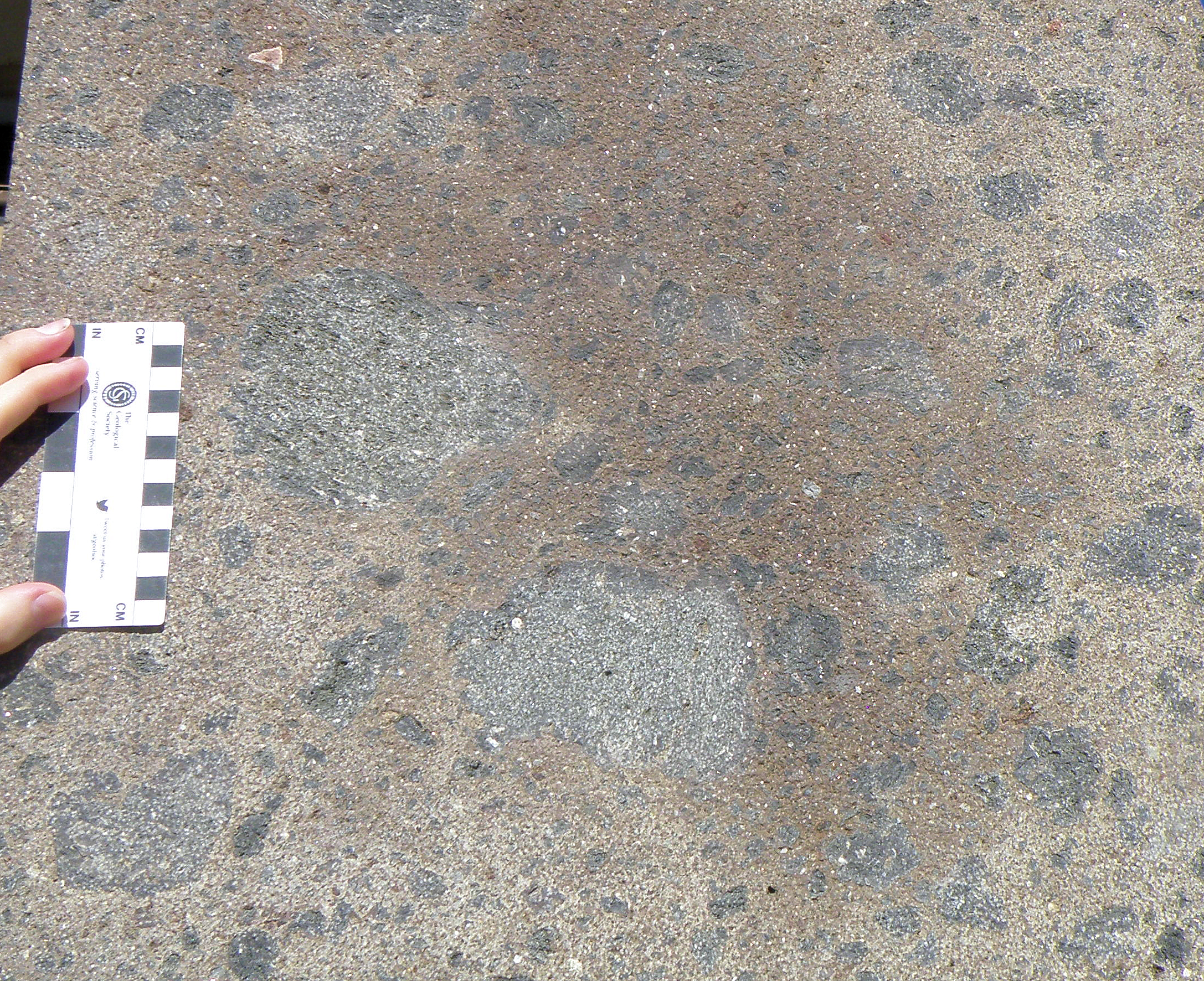
Figure 28.
This block has been sawn parallel
to bedding.
- Study
and describe this spectacular rock in thin
section.
- Give the rock a name, based
on its texture and composition.
|
| General views
of the section at loc 2.4.6 |
Close-ups of
the outcrops |
|
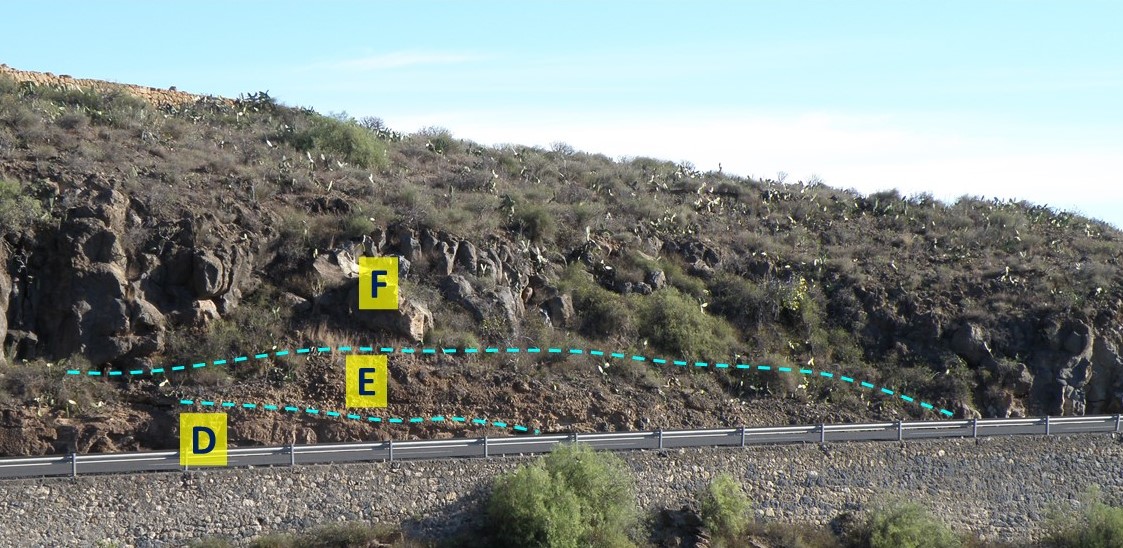
Figure 29. Full-size
image.
Streetview
|
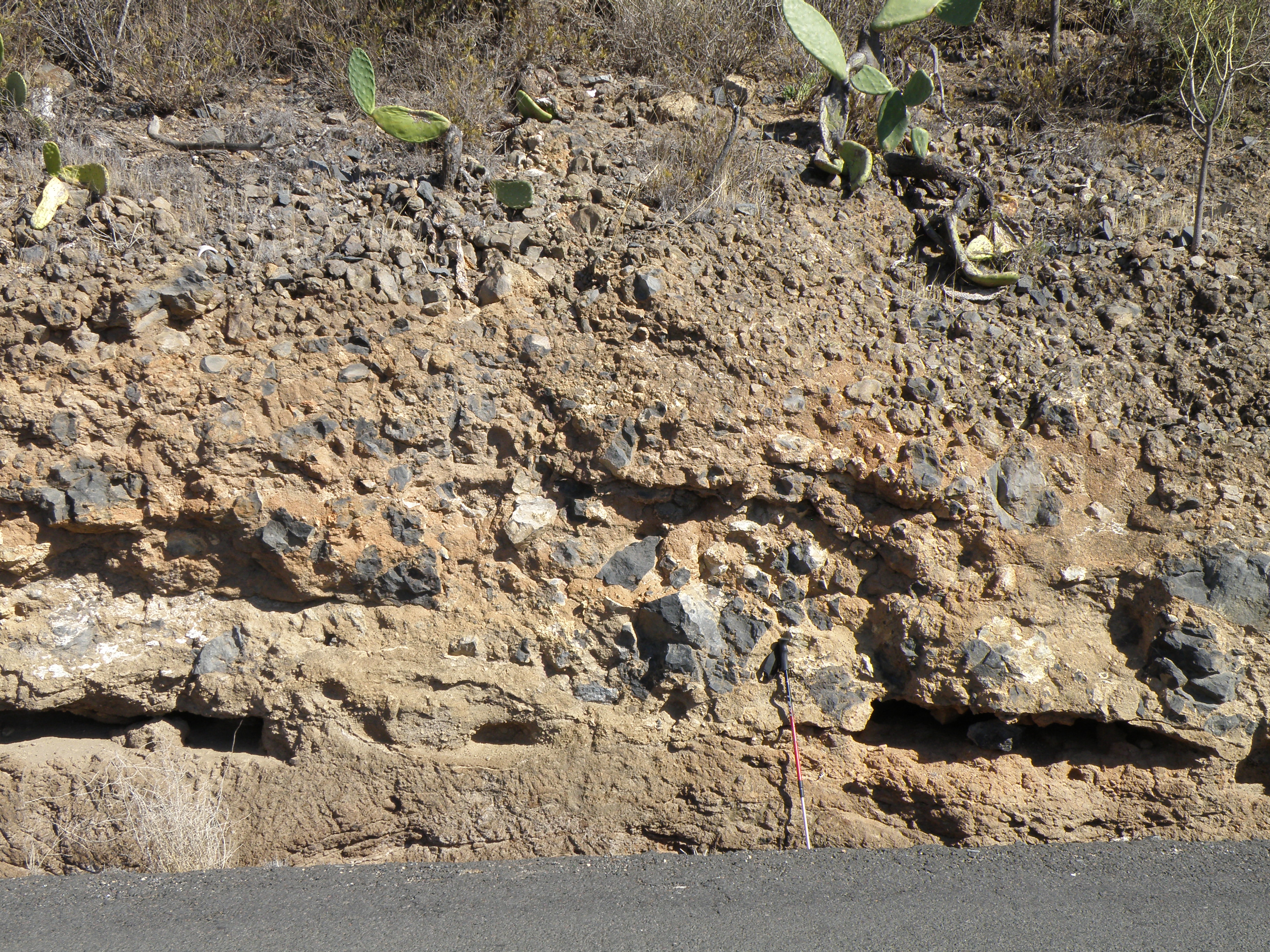
Figure 30. Pole from top of handle to base of red section is 50 cm long.
The base of interval E overhangs
and is in shadow, ~ 50 cm above the road.
|
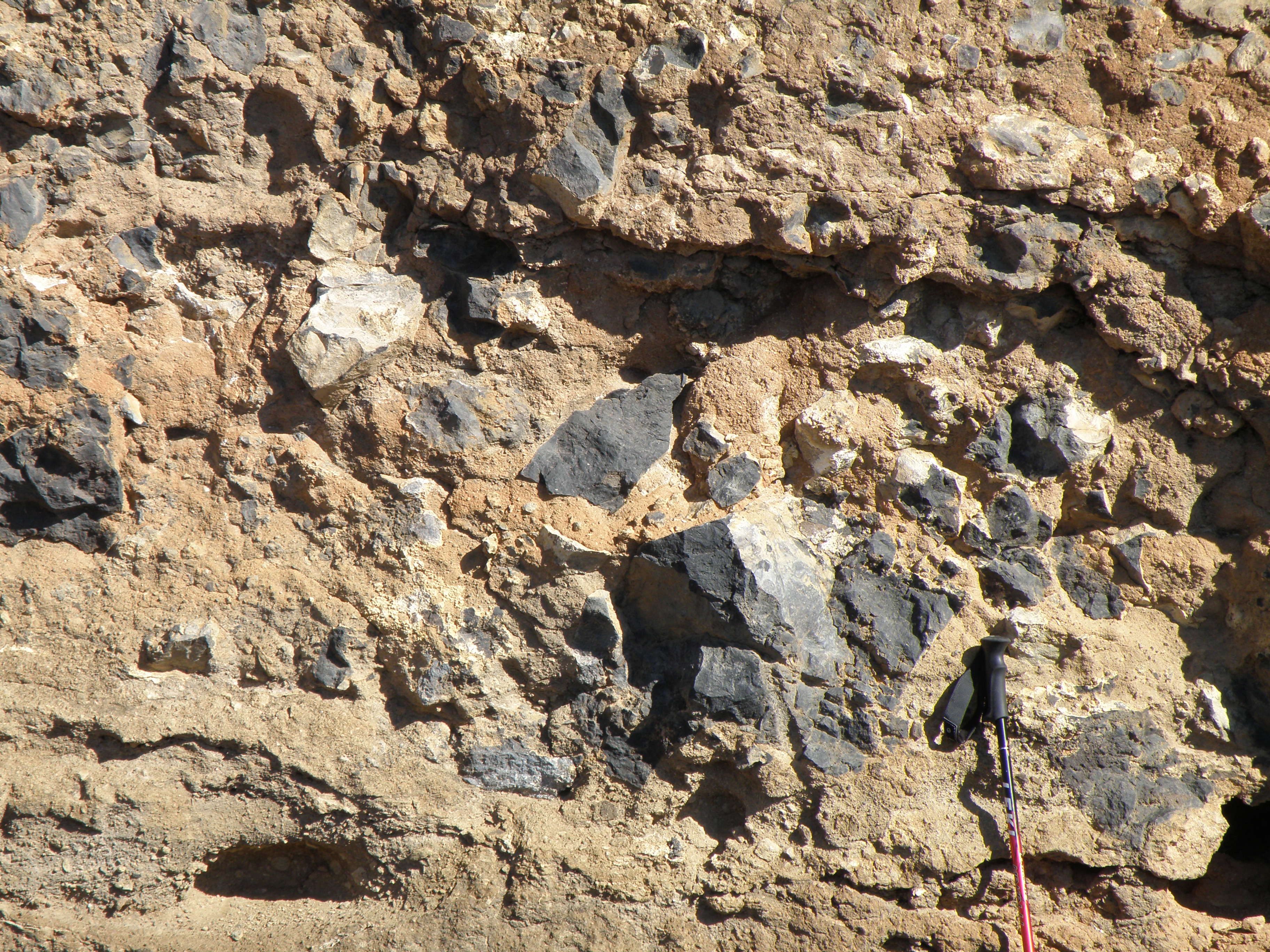
Figure 31. Rubber handle grip is 13 cm long.
- Fully describe the deposit
shown in this image and Figure 30, using the description scheme for
clastic sedimentary rocks. Pay particular attention to texture.
|
|
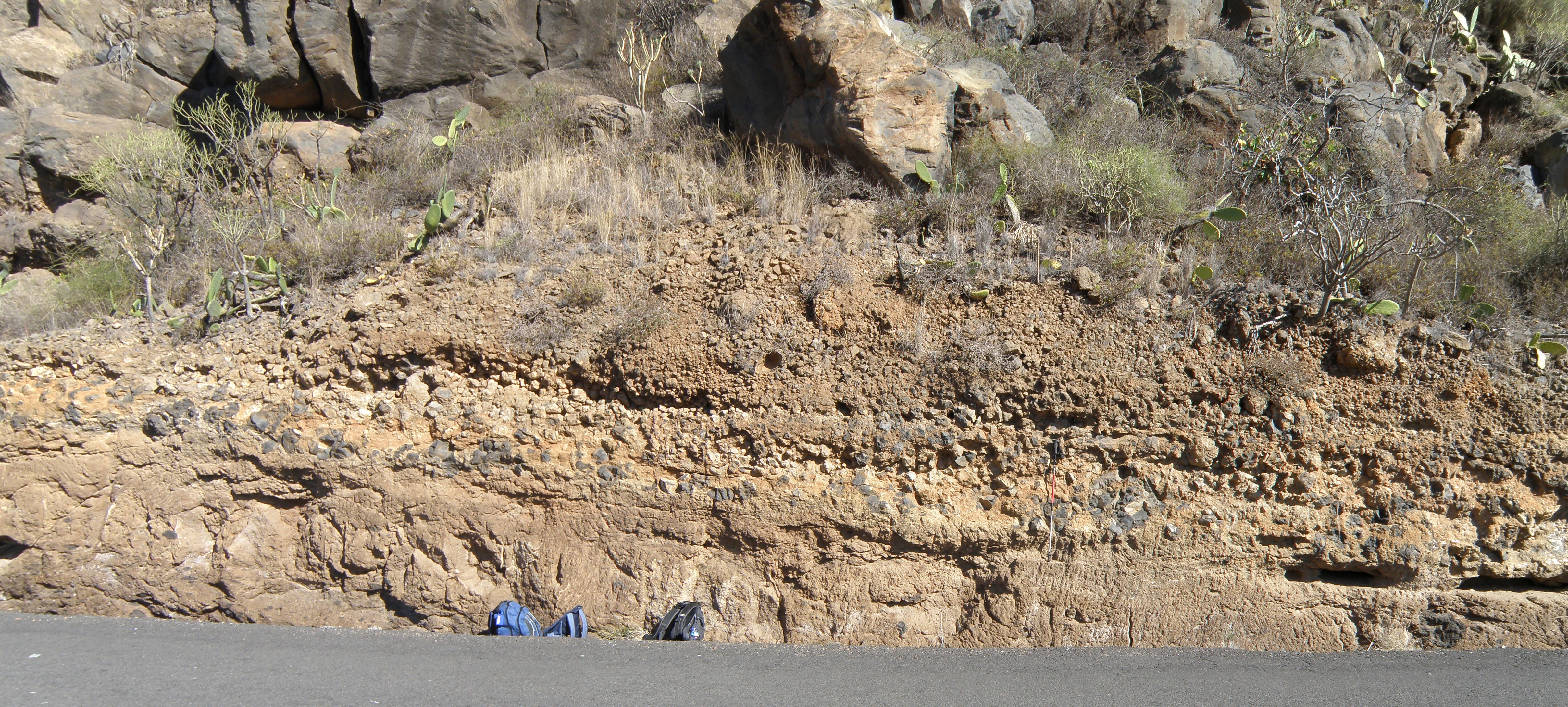
Figure 32. Detail of the left-centre
part of Figure 29. Backpack on right is ~50 cm tall.
|
|
|
| General views
of the section at loc 2.4.7 |
Close-ups of
the outcrops |
|
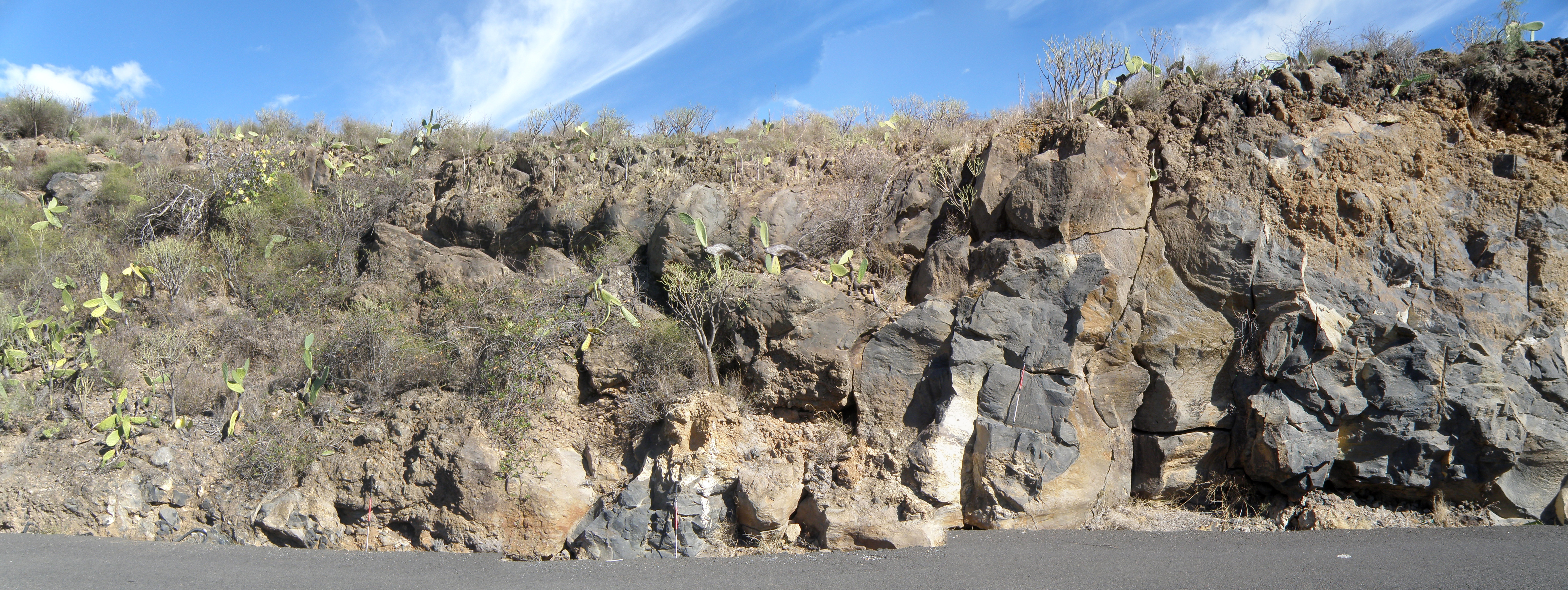
Figure 33. Pole (centre right) is 1 metre long.
The left-hand (northern) part
of the outcrop.
Streetview
|
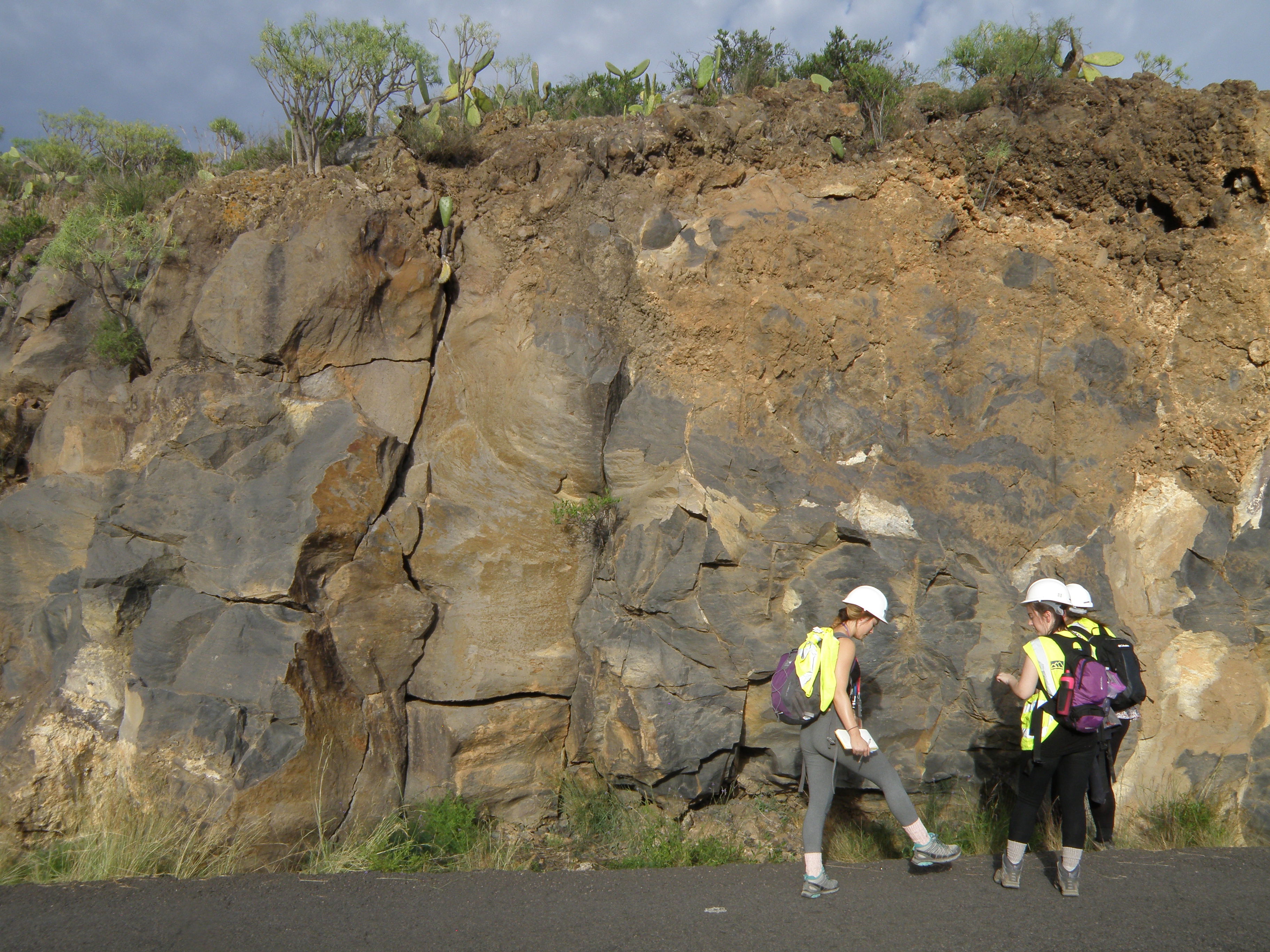
Figure 34.
Detail of the right-hand part
of Figure 33.
|
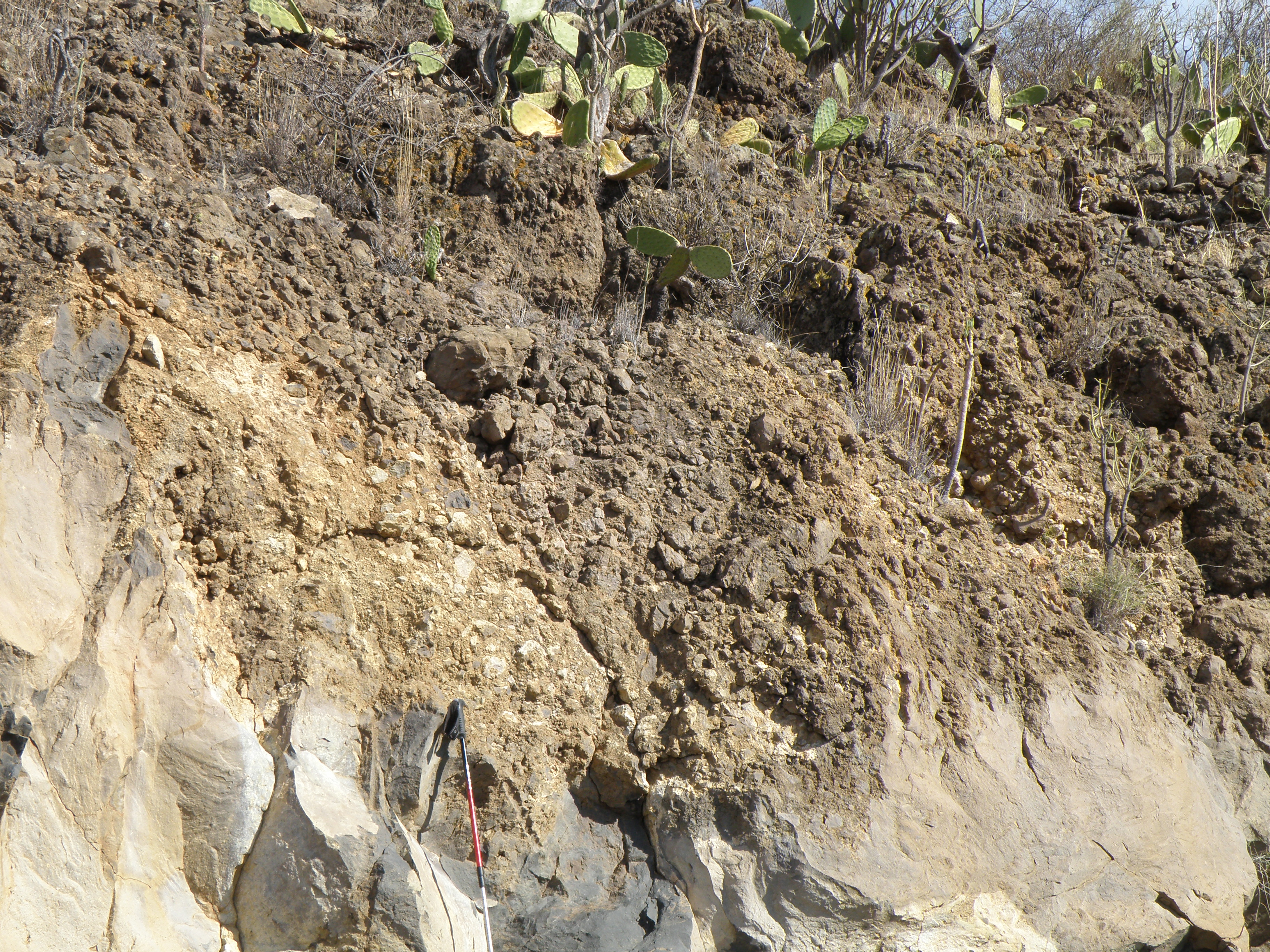
Figure 35. Pole from top of handle to base of red section is 50 cm long.
Detail of the area above the
geologists' heads in Figure 34.
- There are two lithologies
here. Describe them, and explain the possible relationship between them.
|
|
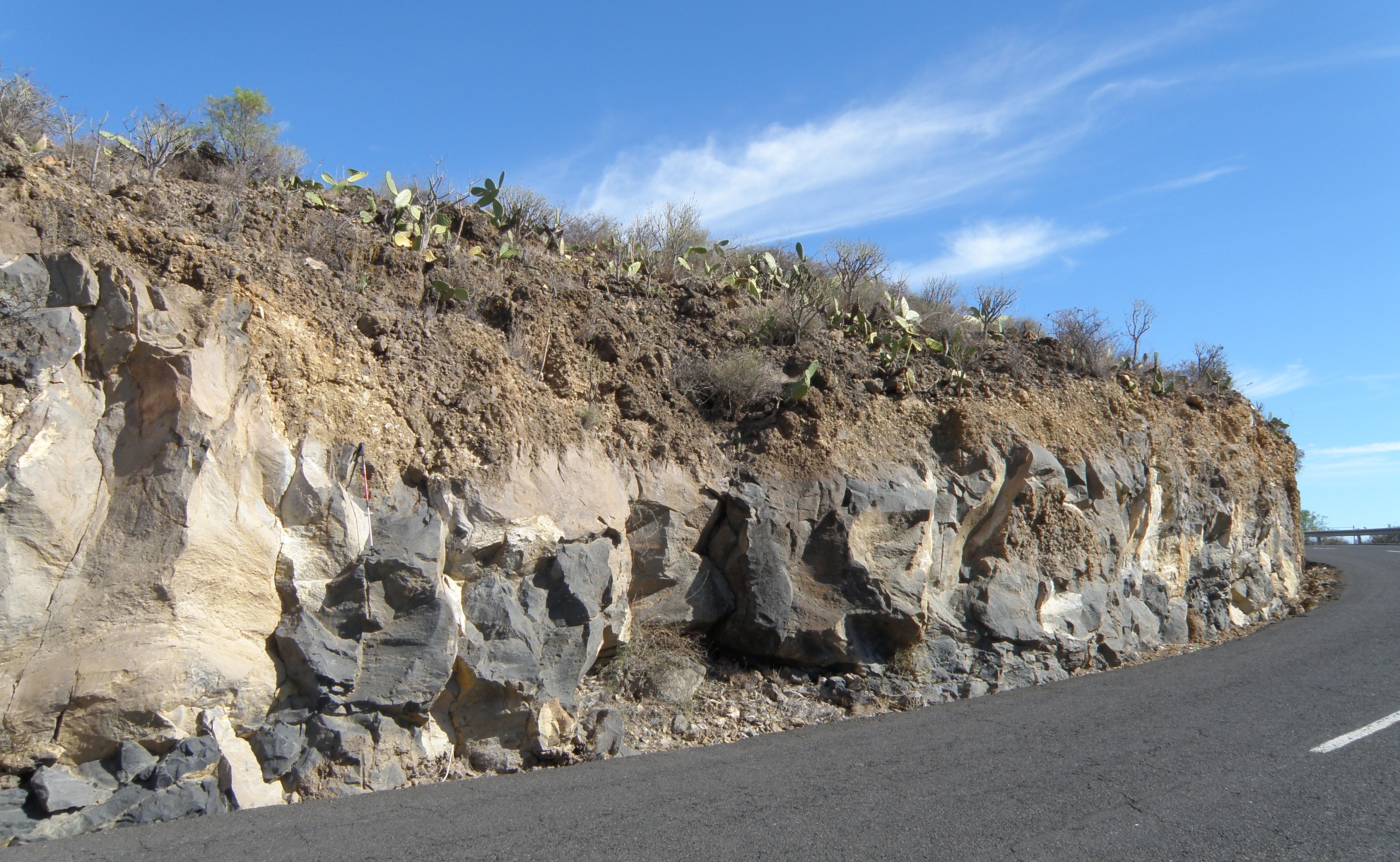
Figure 36.
The right-hand (southern) part
of the outcrop.
- As in Figure 35, we can
see two lithologies. Describe the distribution of these, and show them
on your log.
|
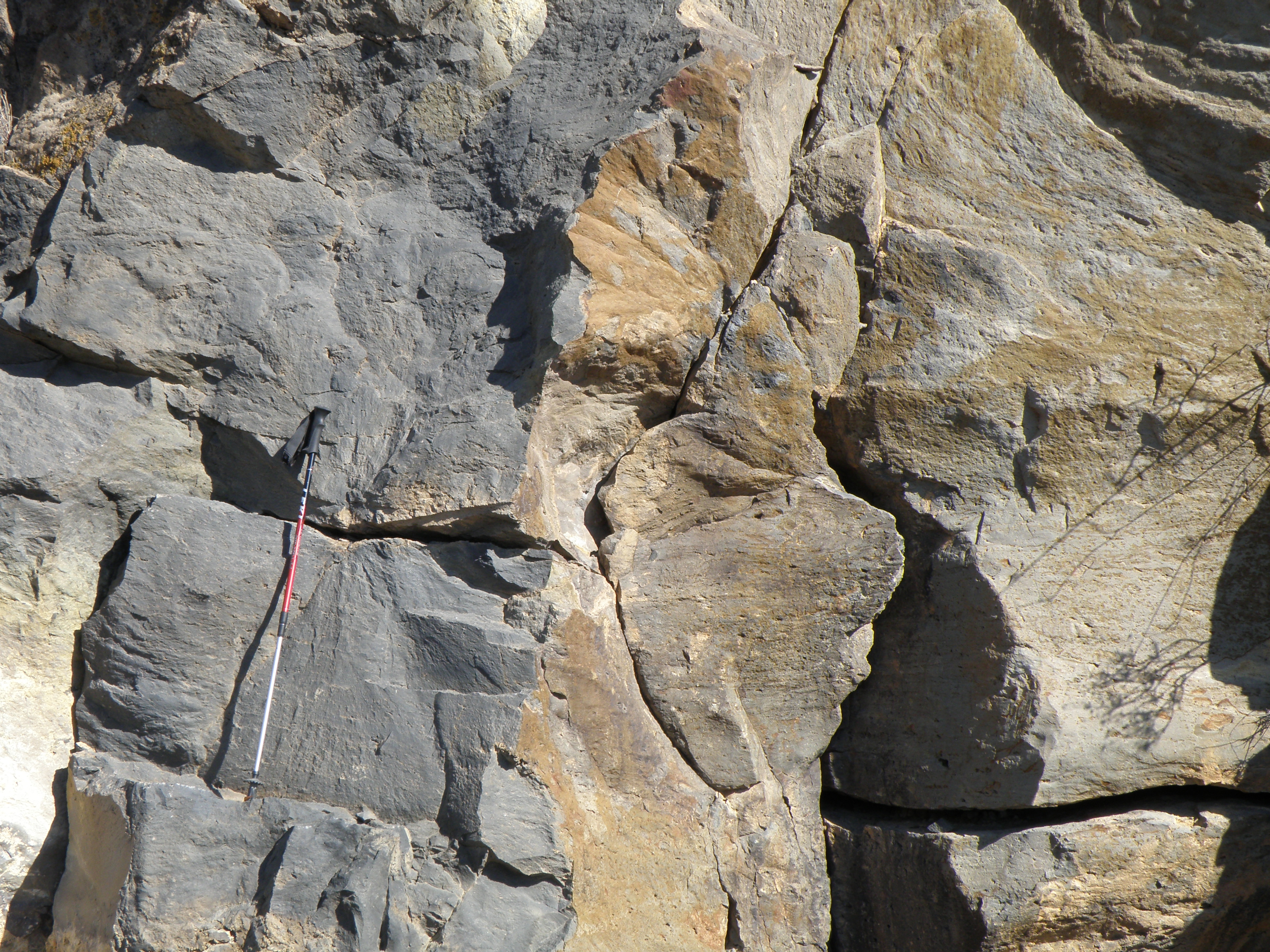
Figure 37. Pole is 1 metre long.
- Zoom in and describe any
structures you can see.
- What do these structures
tell us about the properties of the lava?
|
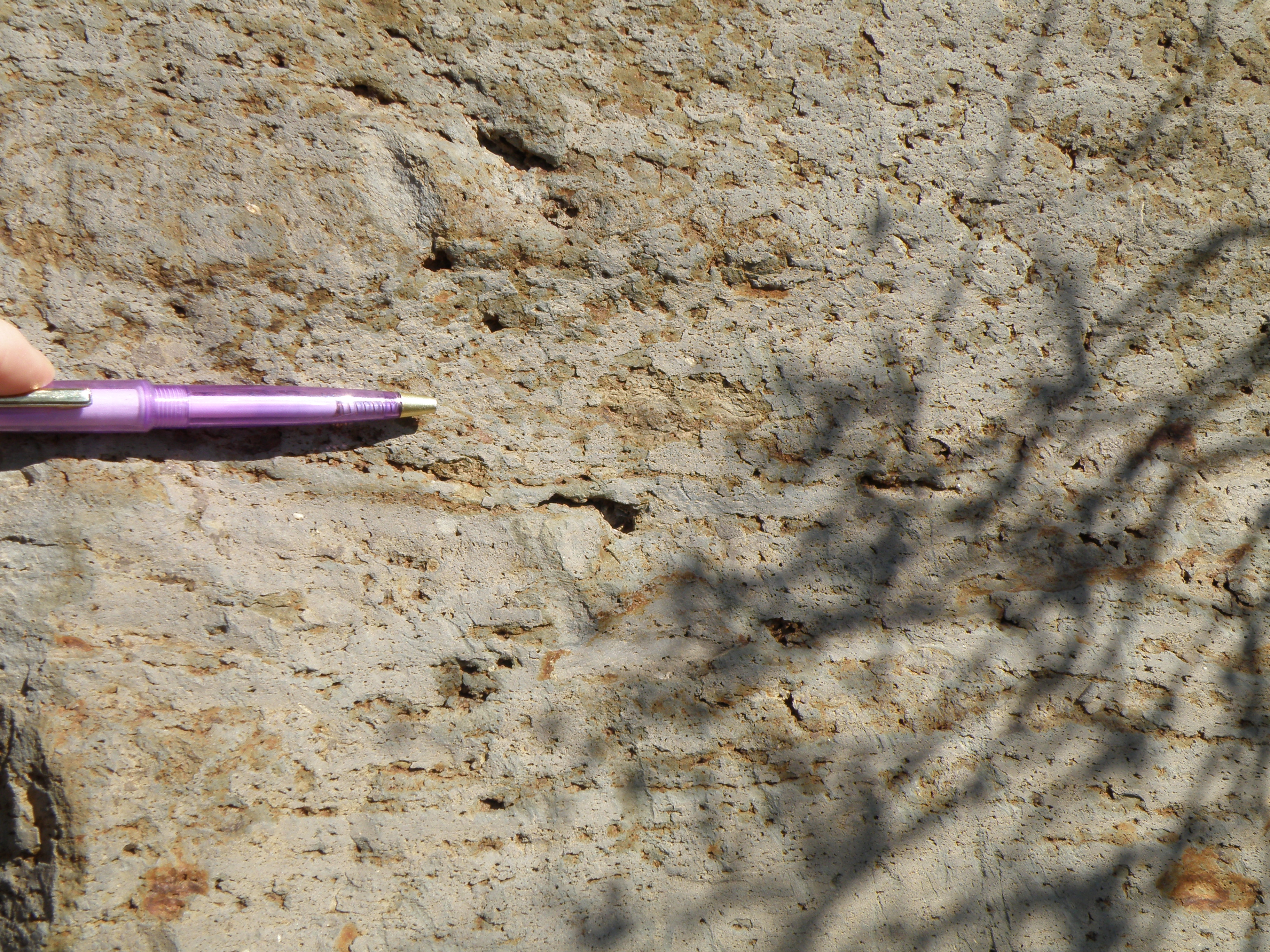
Figure 38. Pen is 15 cm long.
Close-up of the structures
in Figure 37, seen on a weathered surface.
|
|
This is clearly a lava flow.
Chemical analysis shows that its composition is mugearite.
Close examination of the outcrop
reveals rare small blue crystals of the mineral sodalite. You won't
see it in any of these photos, however.
- What do the rock composition
and the presence of sodalite in this rock tell us?
Our section stops here,
without seeing the next unit above interval F. Record this as top not
seen on your log.
|
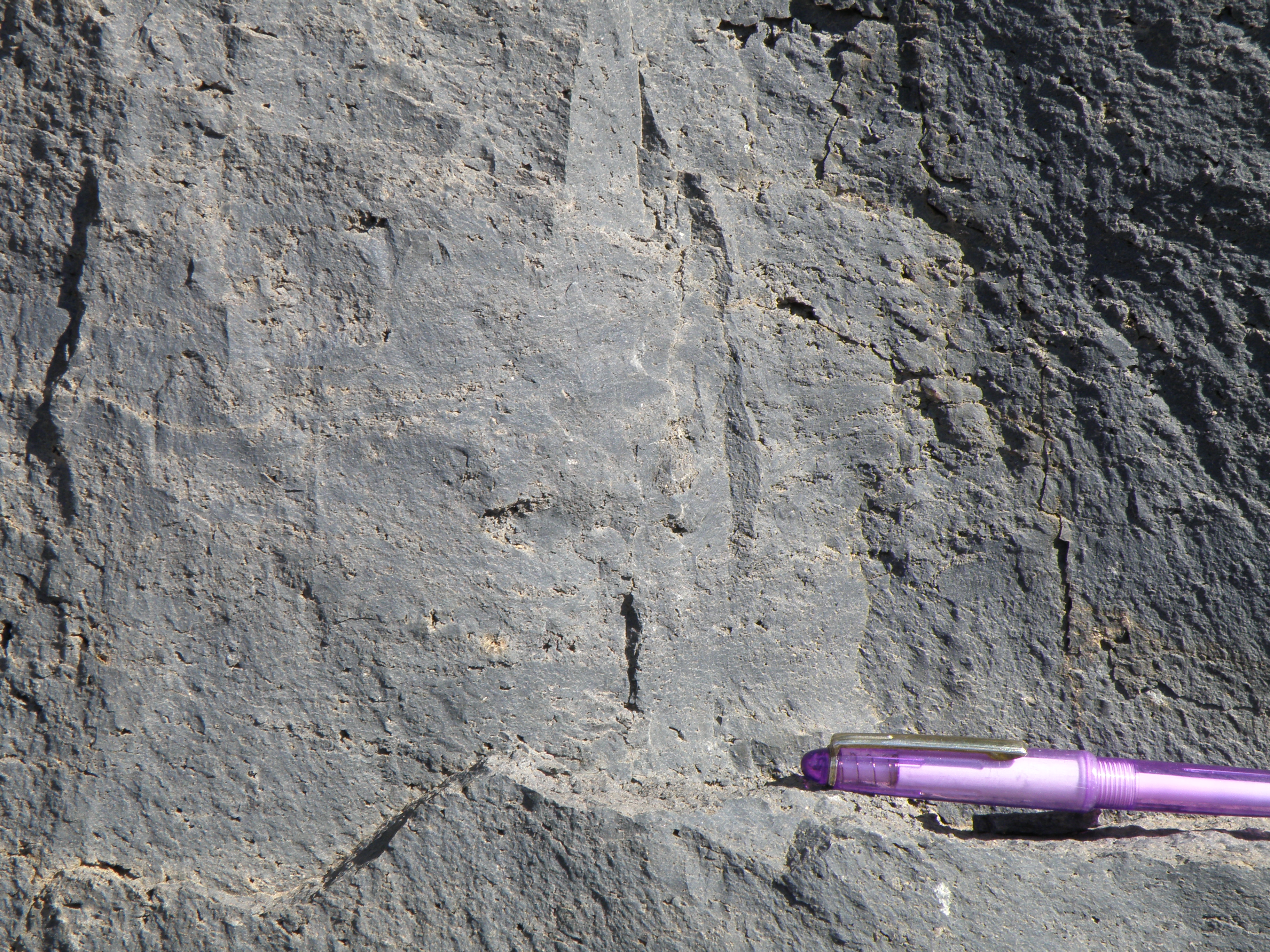
Figure 39.
Close-up of the structures
in Figure 37, seen on a fresh surface.
|
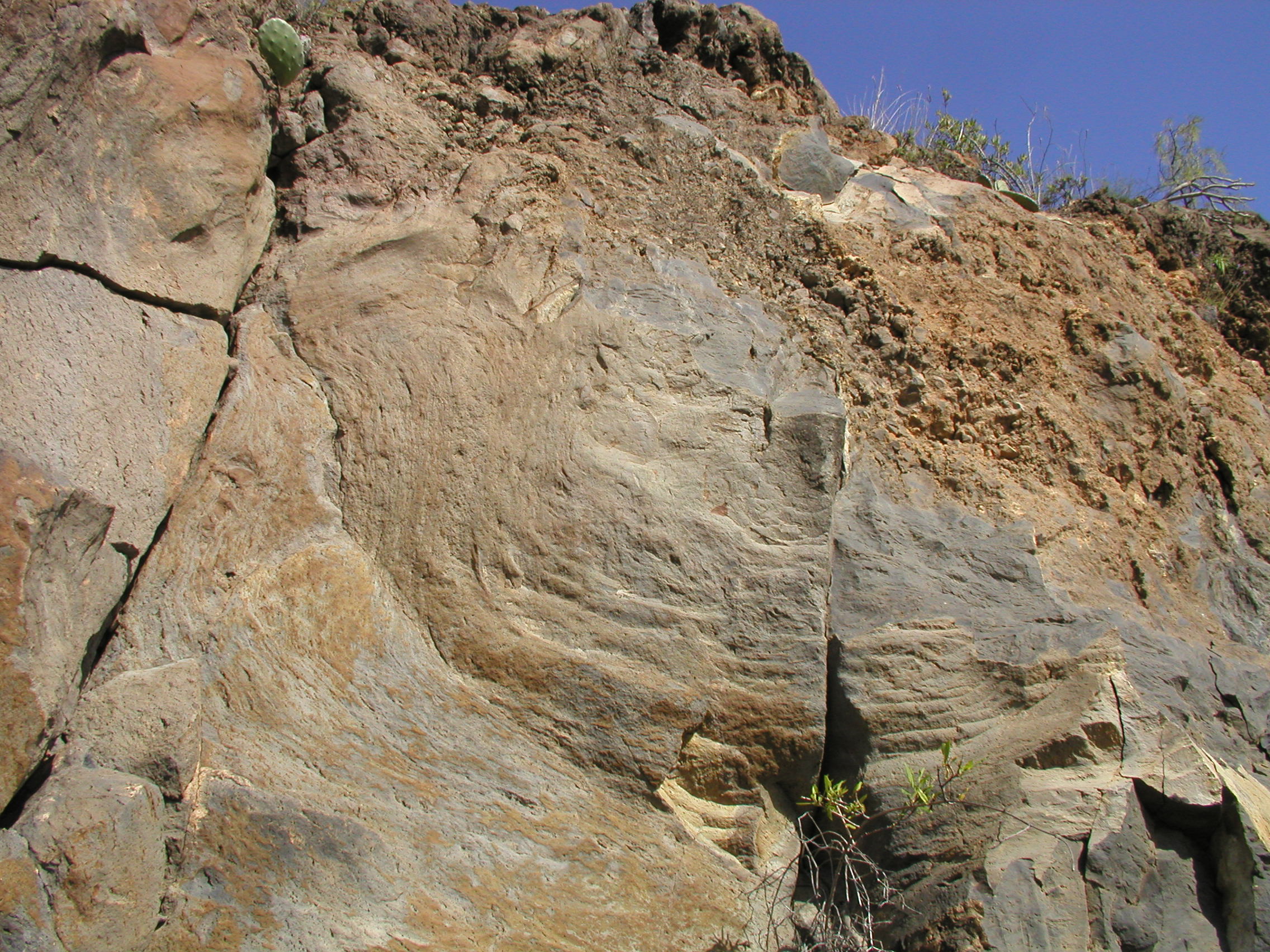
Figure 40. Close-up
of the top centre part of Figure 34.
- Describe and identify the
structures, and explain how they formed.
|

References
DAVILA HARRIS,
P., BRANNEY, M.J. And STOREY, M. (2011). Large eruption-triggered ocean-island
landslide at Tenerife: Onshore record and long-term effects on hazardous pyroclastic
dispersal. Geology, vol 39; p951-954

Interpreting the field evidence
You have now acquired a variety of
different types of data on the logged section. This includes lithology, structures
and field relationships. Your task now is to draw up the log and interpret the
data.
- Subdivide the log into lettered/numbered
units (for example if you decide to divide up interval B, call the units B1,
B2 etc.)
- For each unit or significant surface
on the log, write a brief interpretation of the processes and conditions of
formation in the right-hand column. Include in your interpretation
information such as volcanic and sedimentary processes, environmental energy,
evidence for time gaps, erosion etc. There must be evidence to support all
of your interpretations.
- Write a short (250 word maximum)
interpretative account of changes in processes, conditions and environments
from the base to the top of the logged section.

Just for fun...
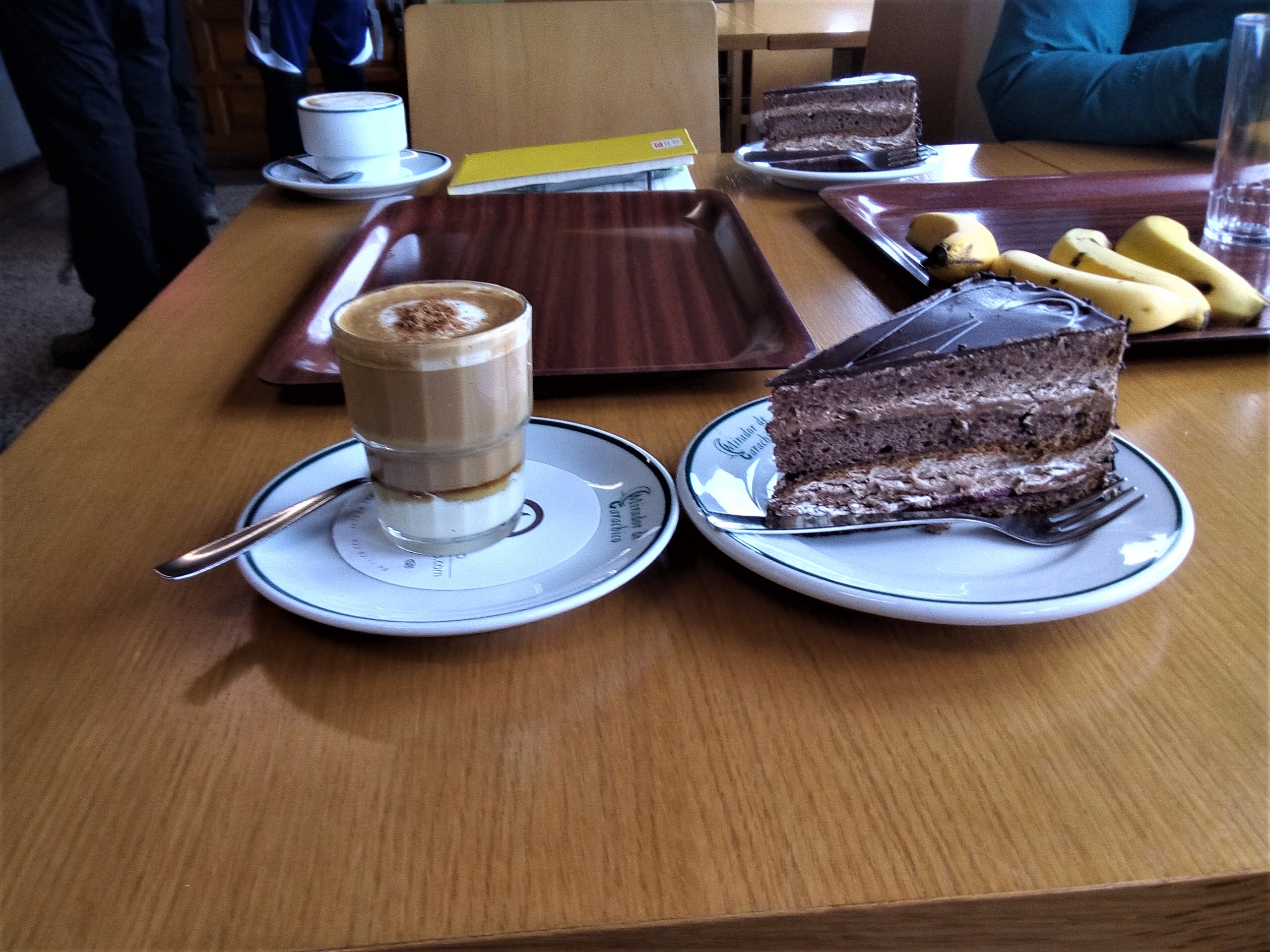 |
Whilst we're in Tenerife, let's
take full advantage of the culture as well as the geology. The barraquito
is a local speciality, and a tasty restorative after a long day in the
field, especially if the weather on the volcano was a bit chilly.
Recipe
|

Where next?
Make sure you've completed all the
work for this locality. Now we can get back on the virtual coach and head off
to our next stop.
 Field trip home page
Field trip home page

This page is maintained
by Roger Suthren. Last updated
11 March, 2021 9:55 AM
. All images © Roger Suthren unless otherwise stated. Images may be re-used
for non-commercial purposes.
![]()
![]()

![]()
![]()
![]()
![]()